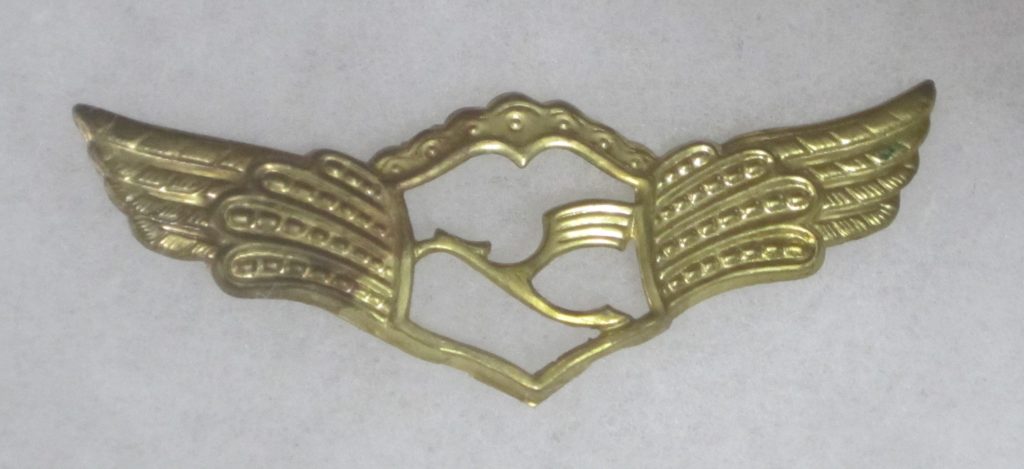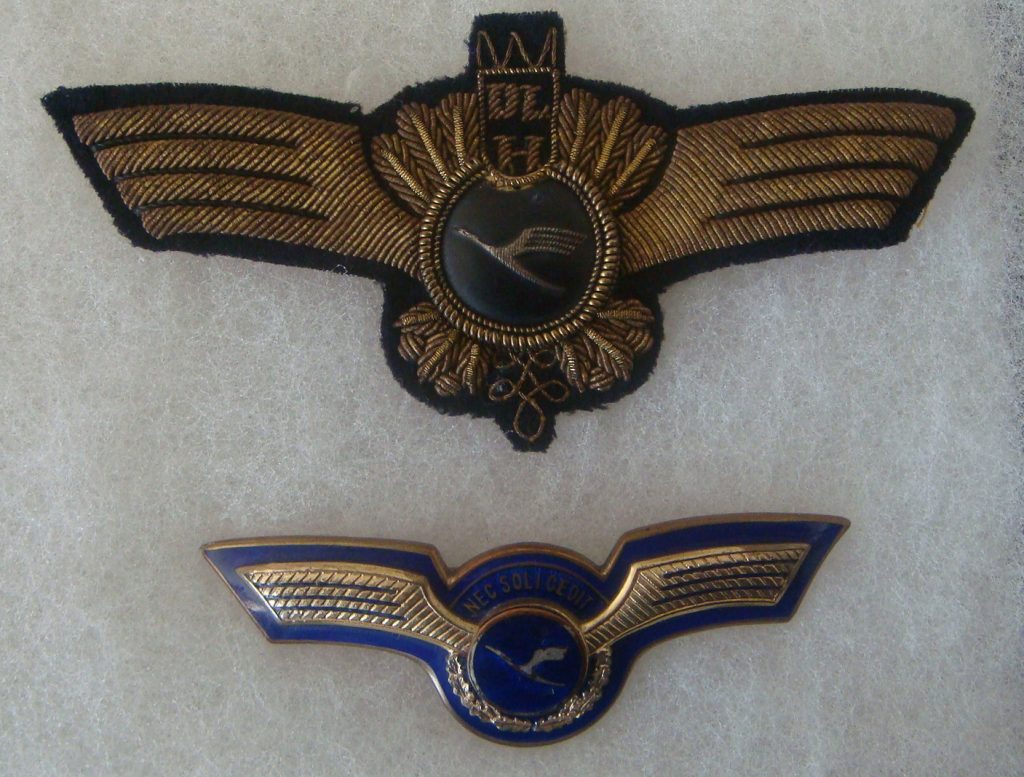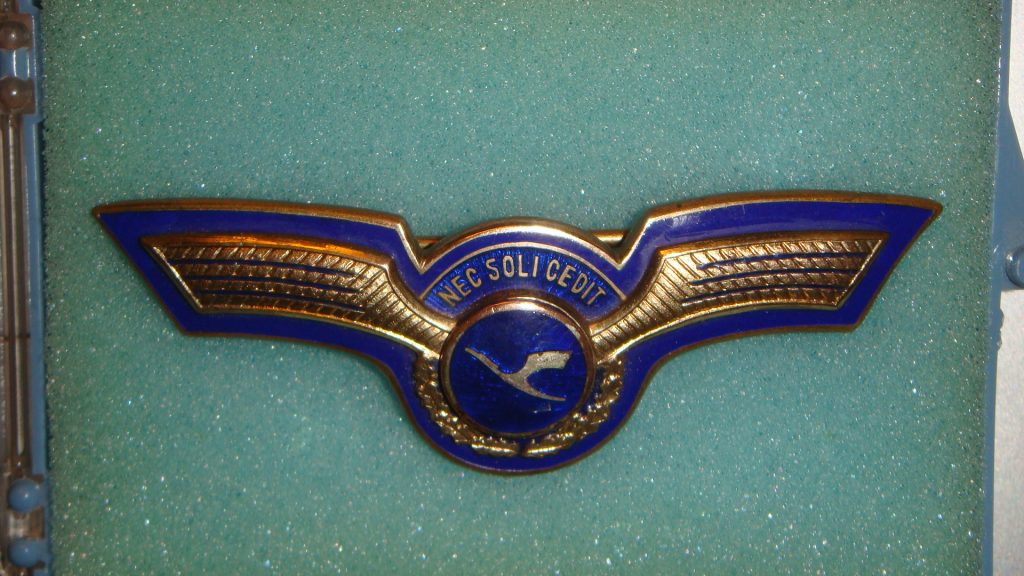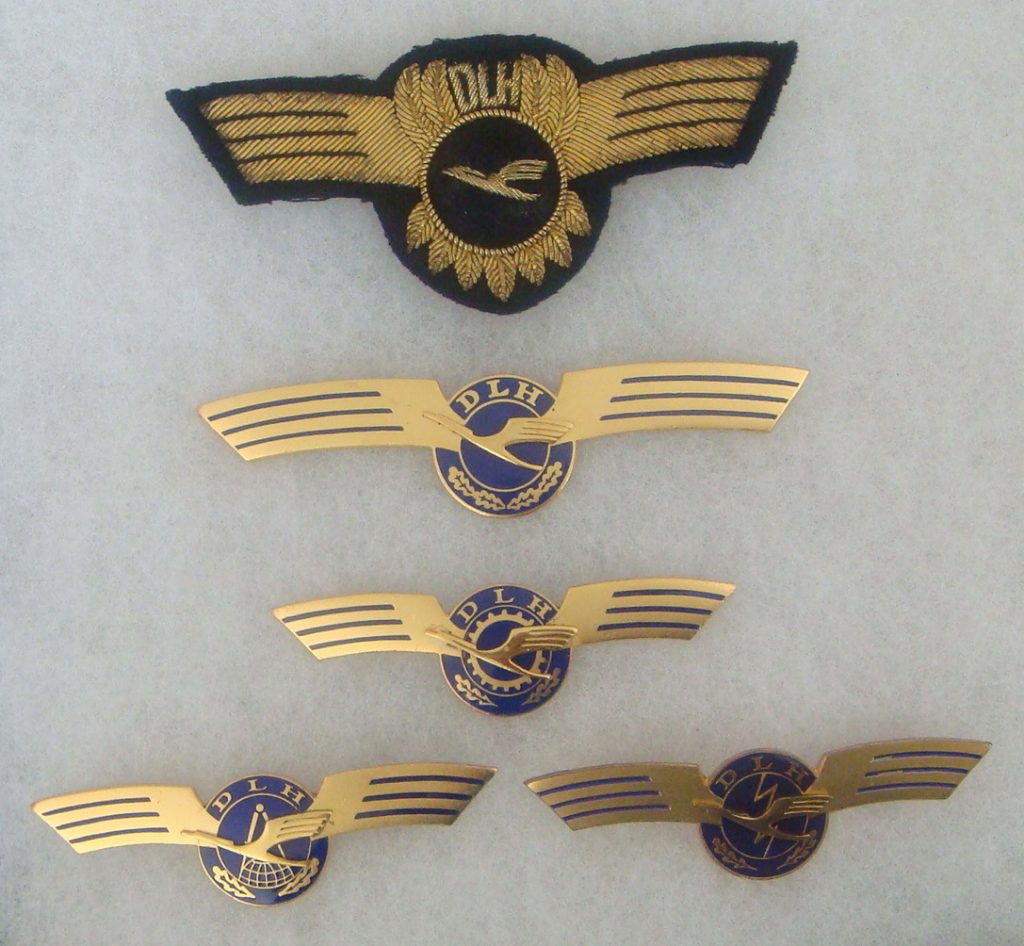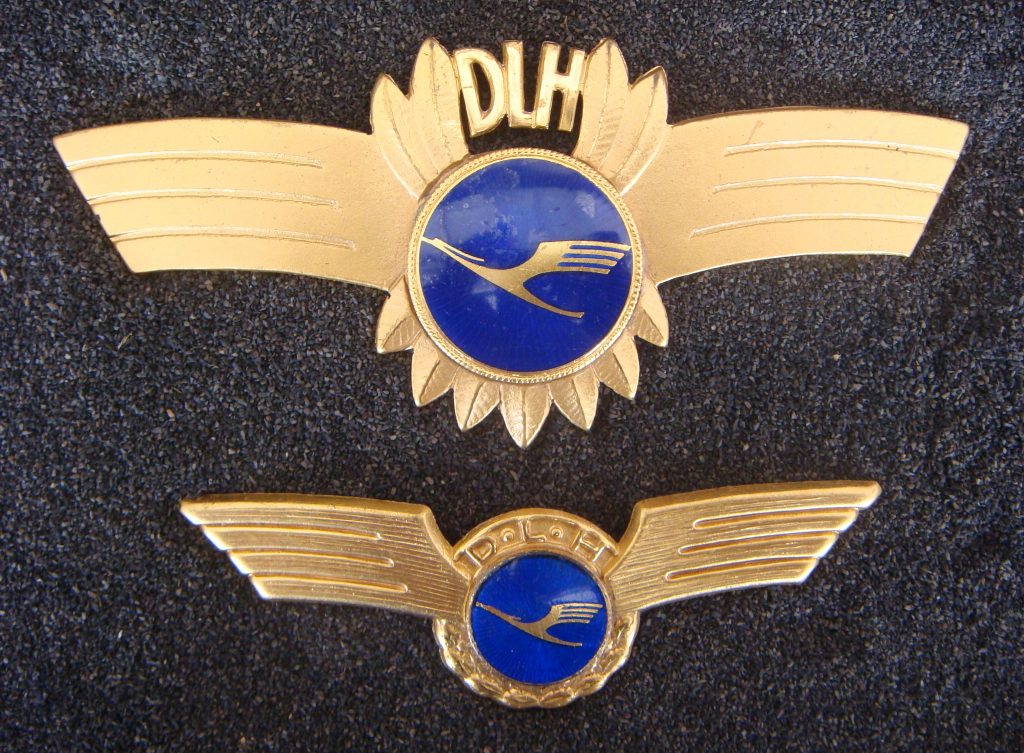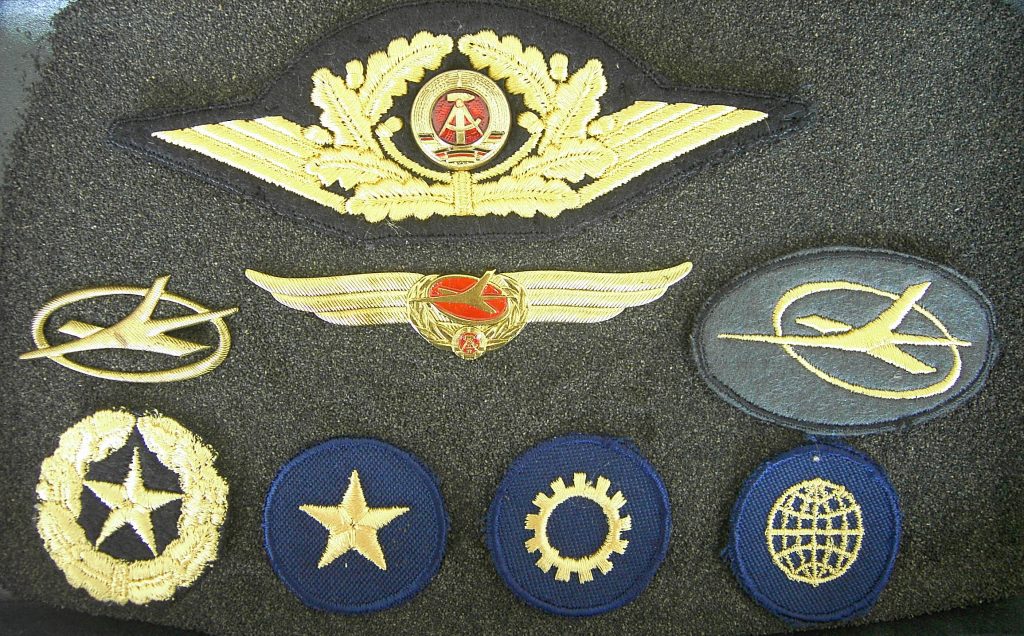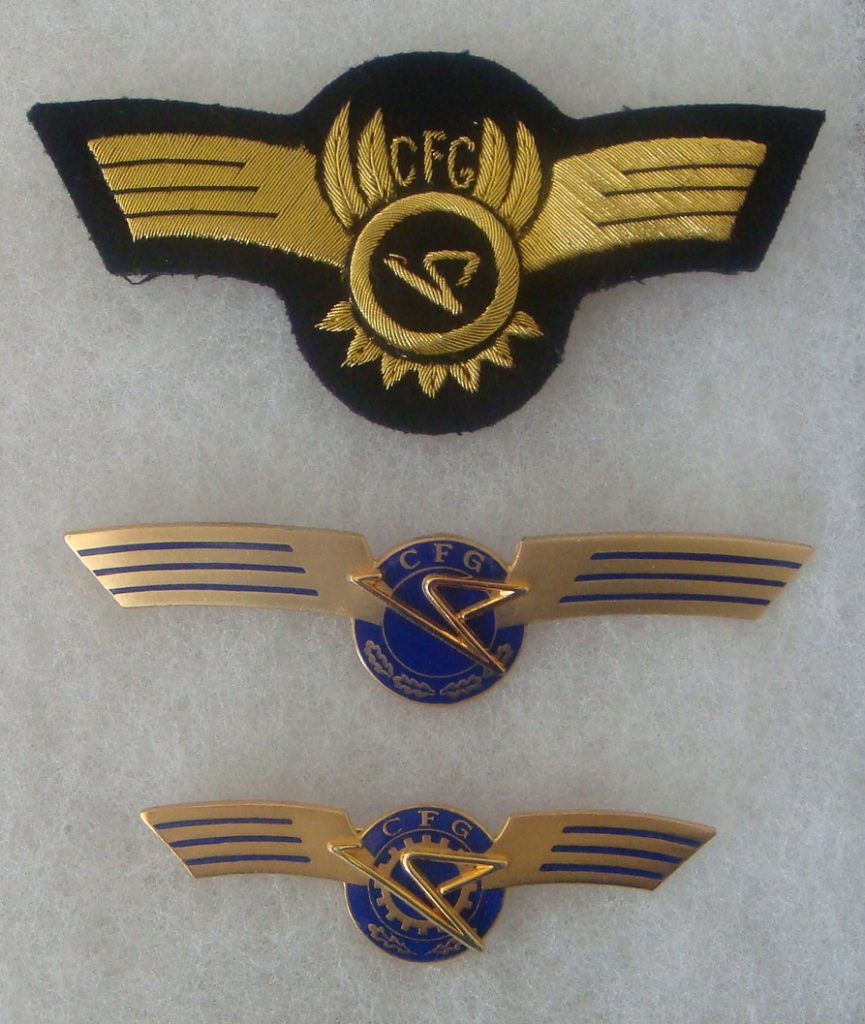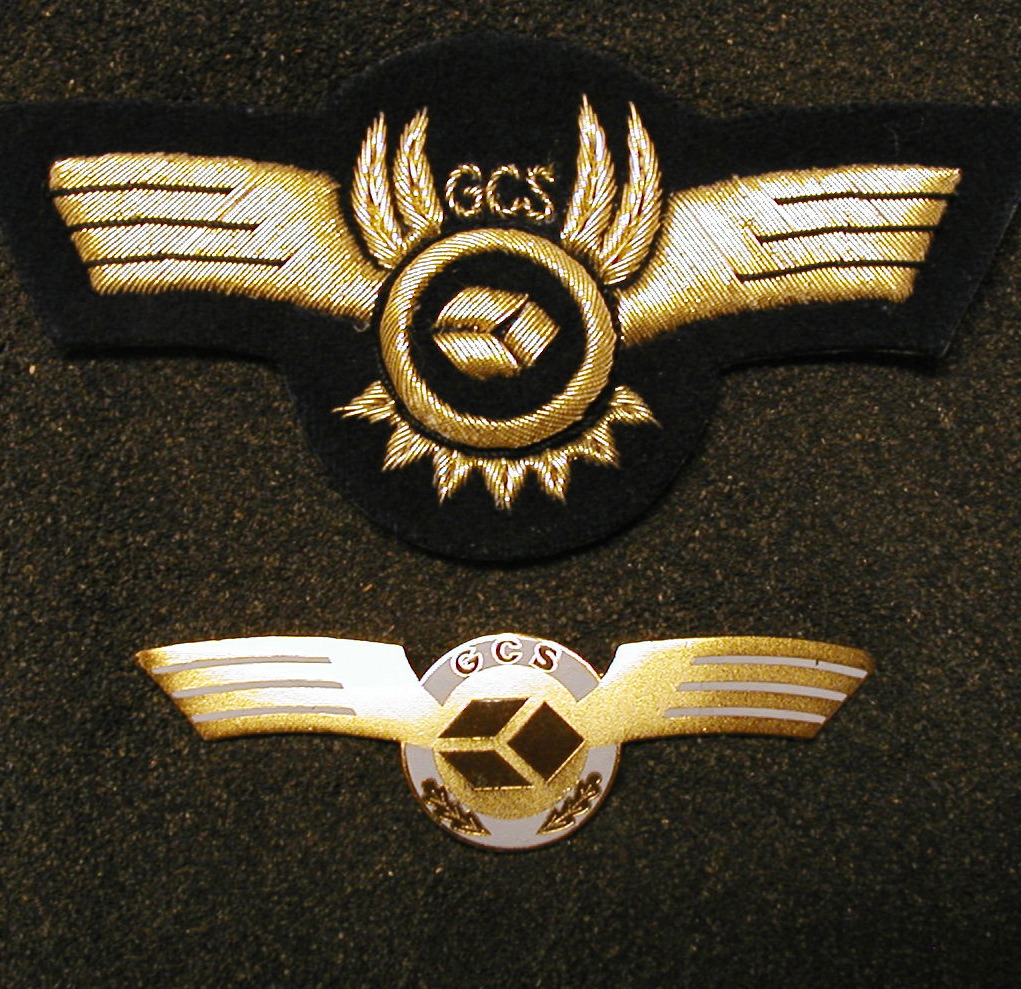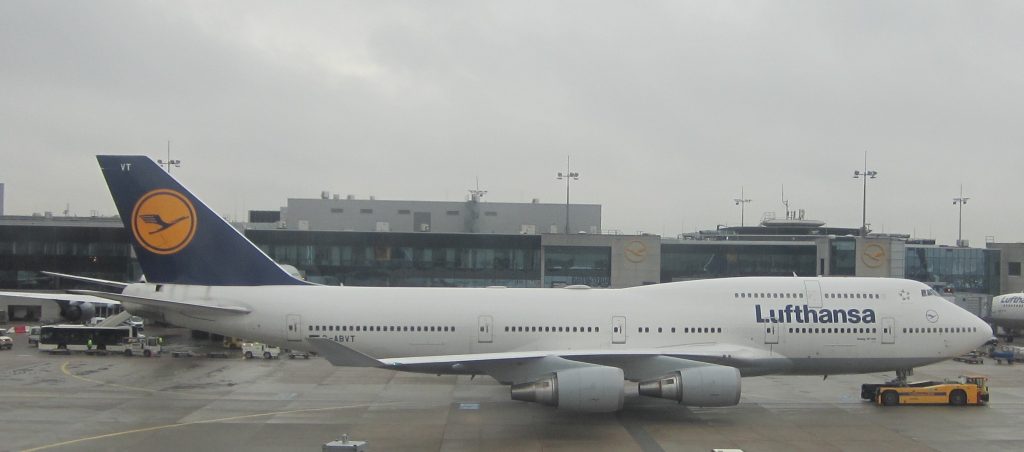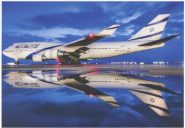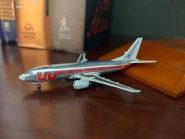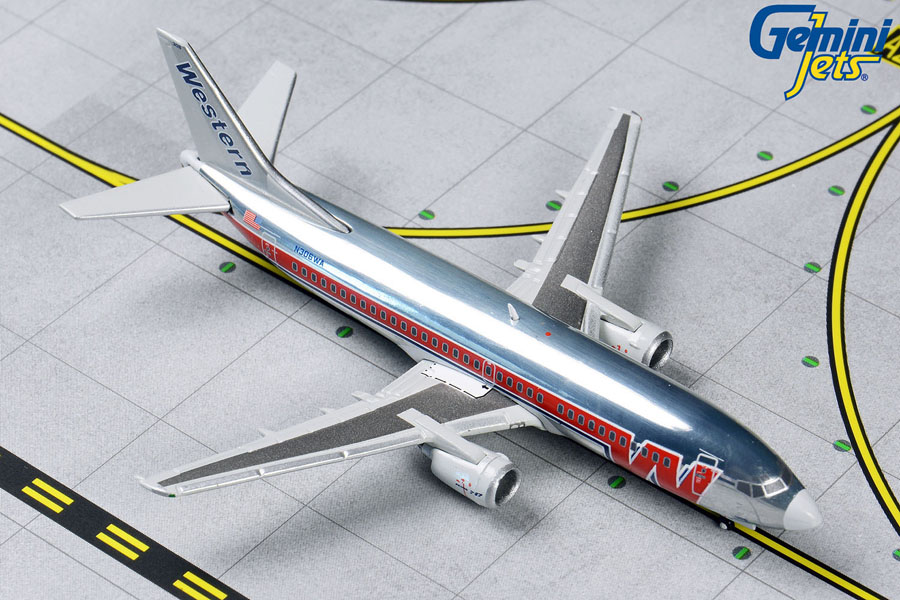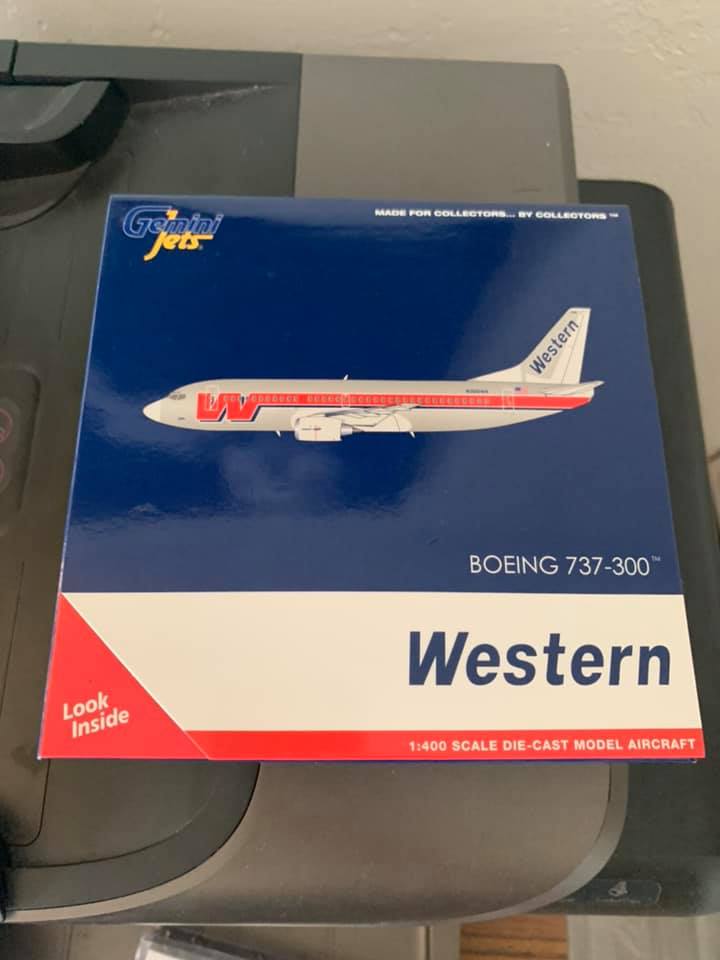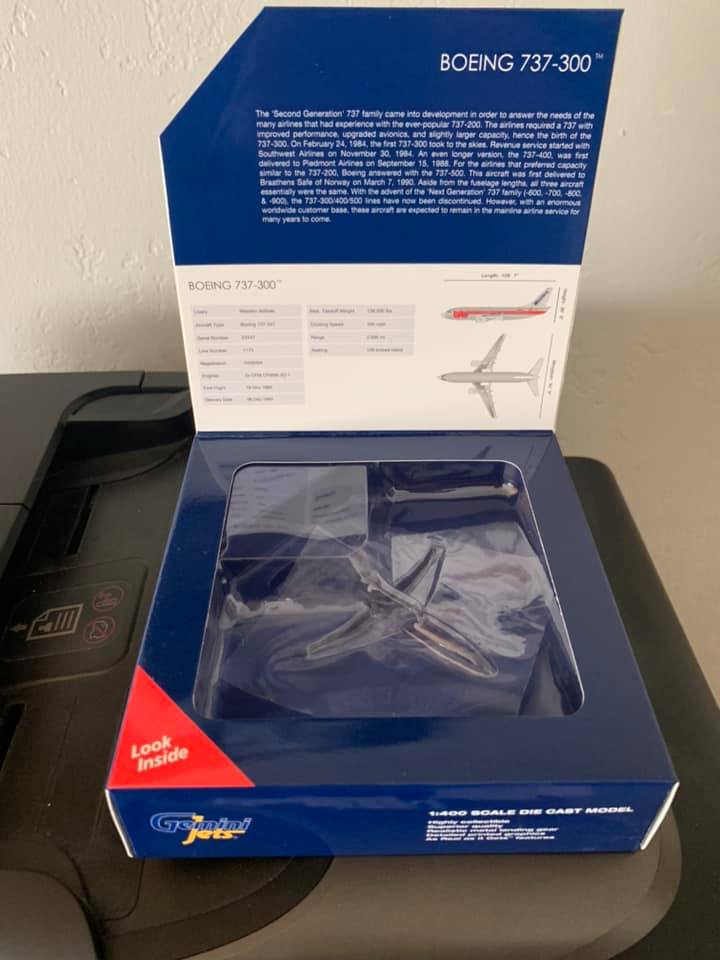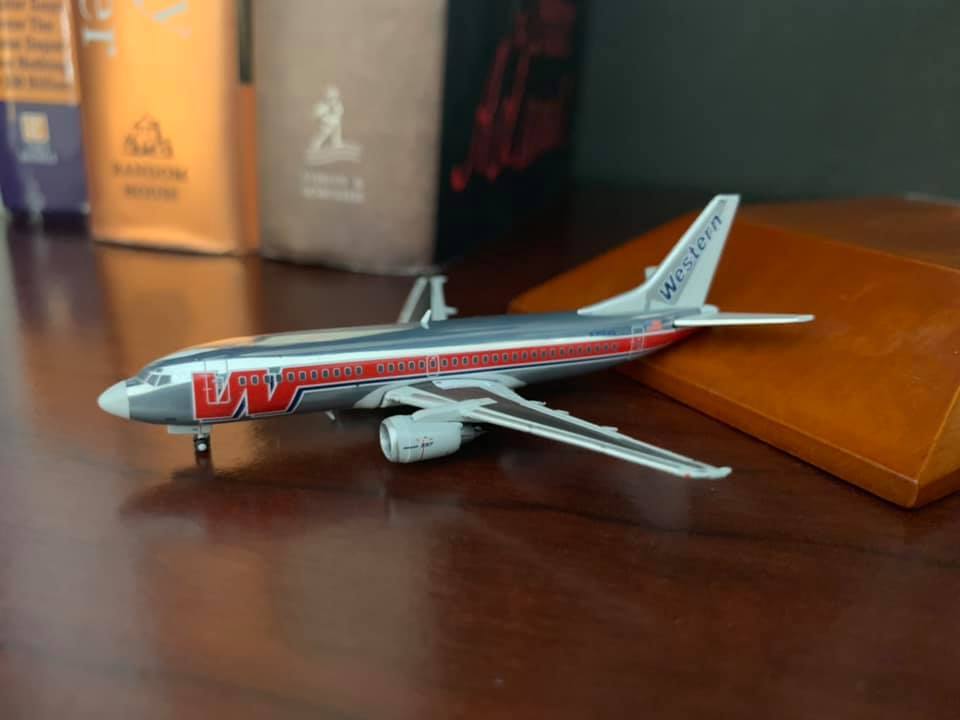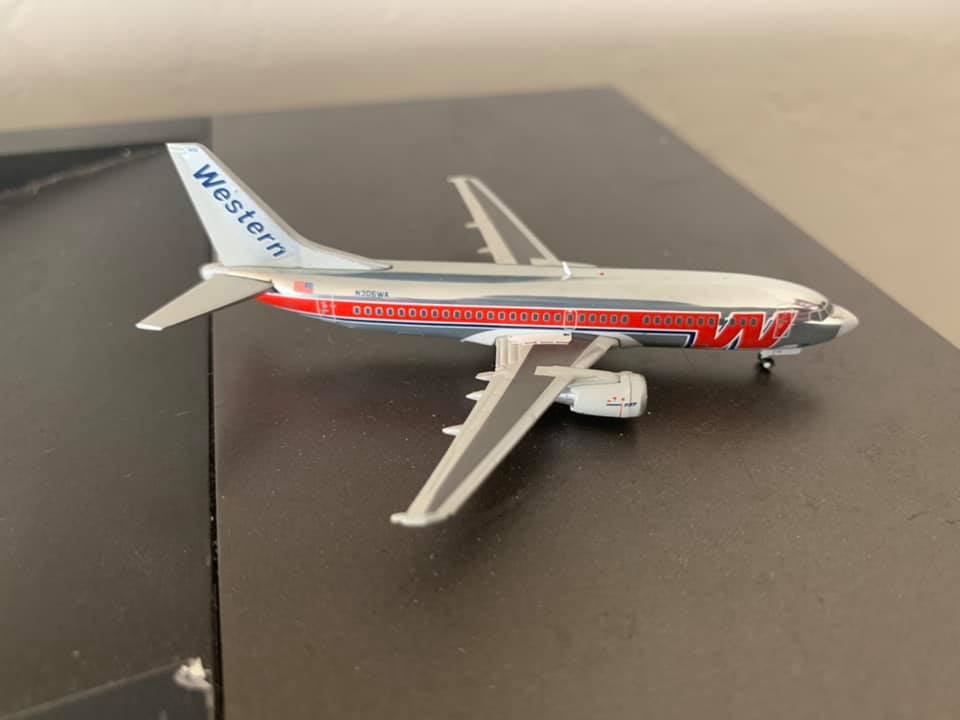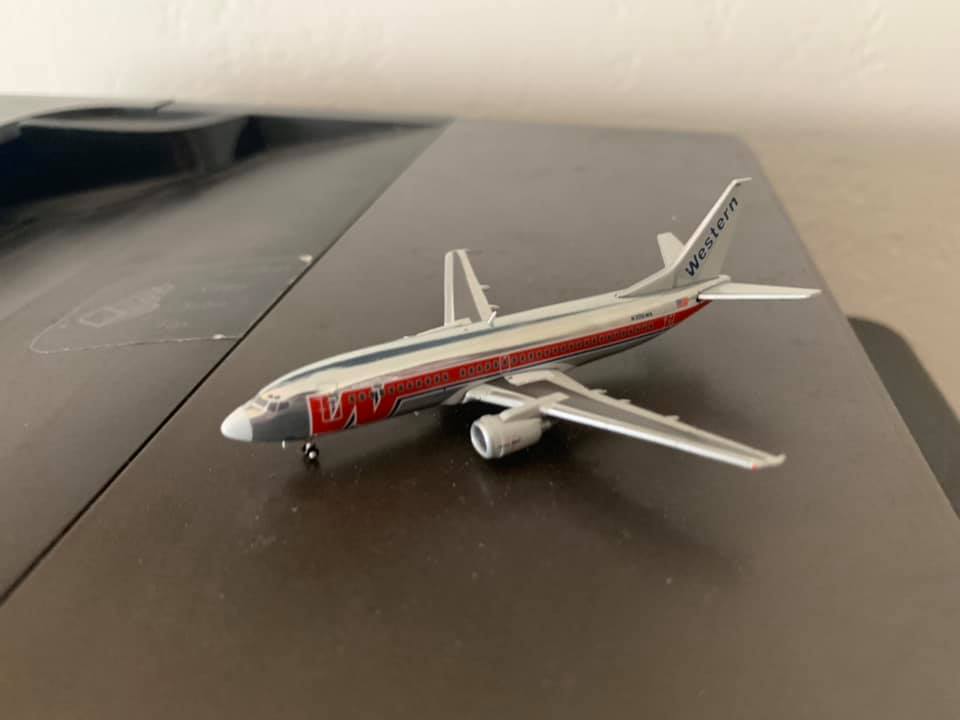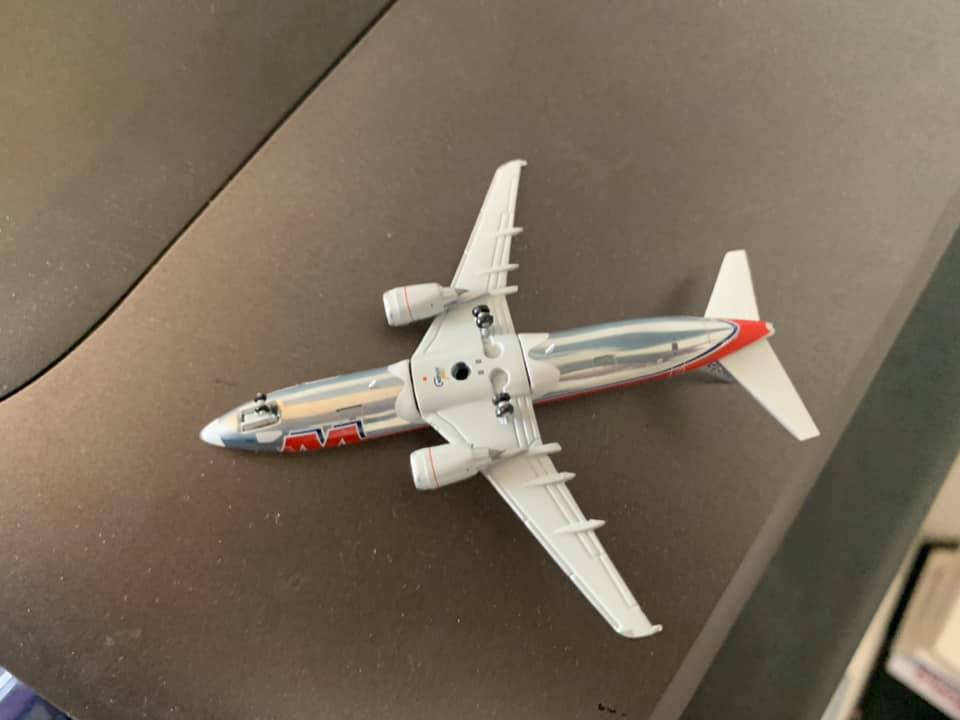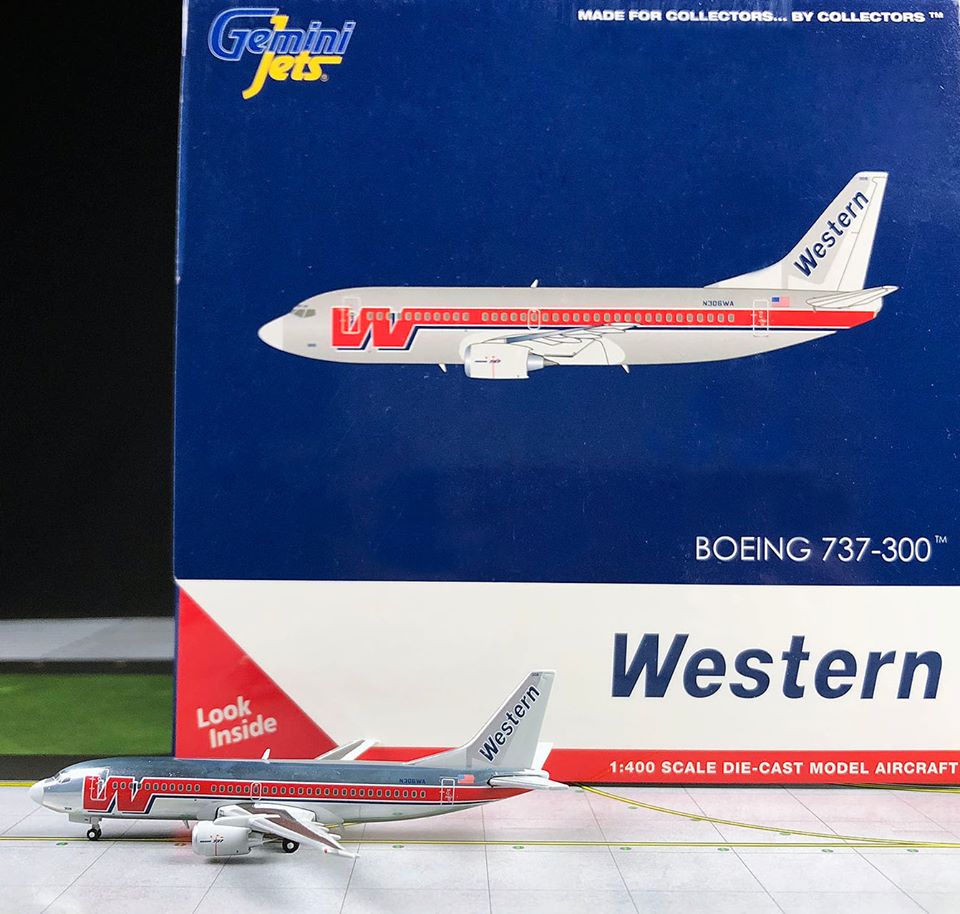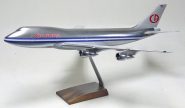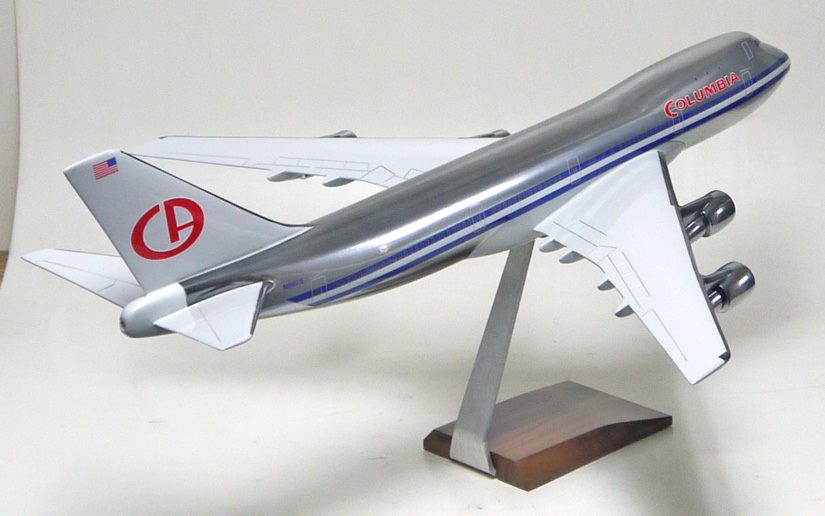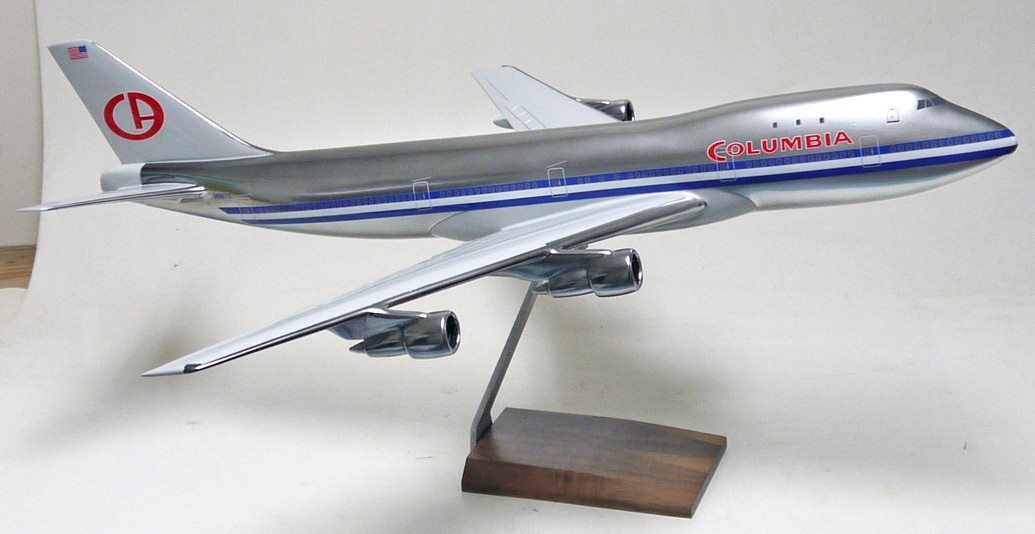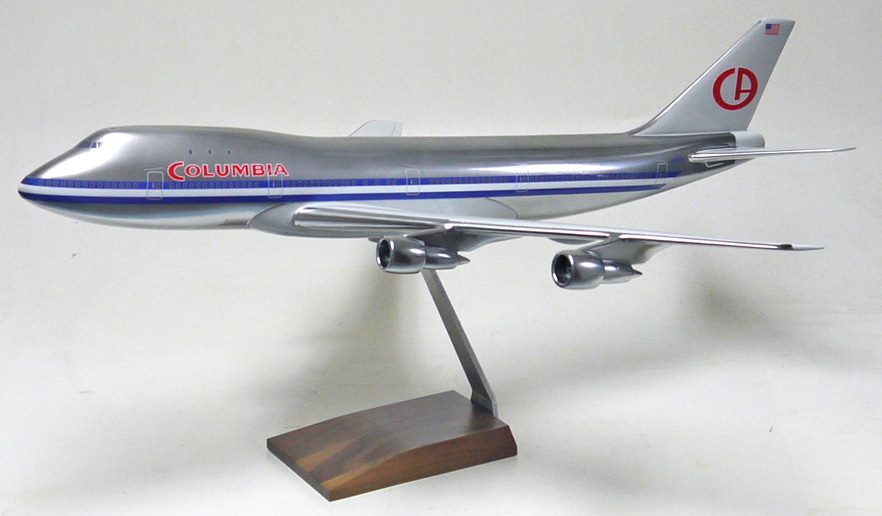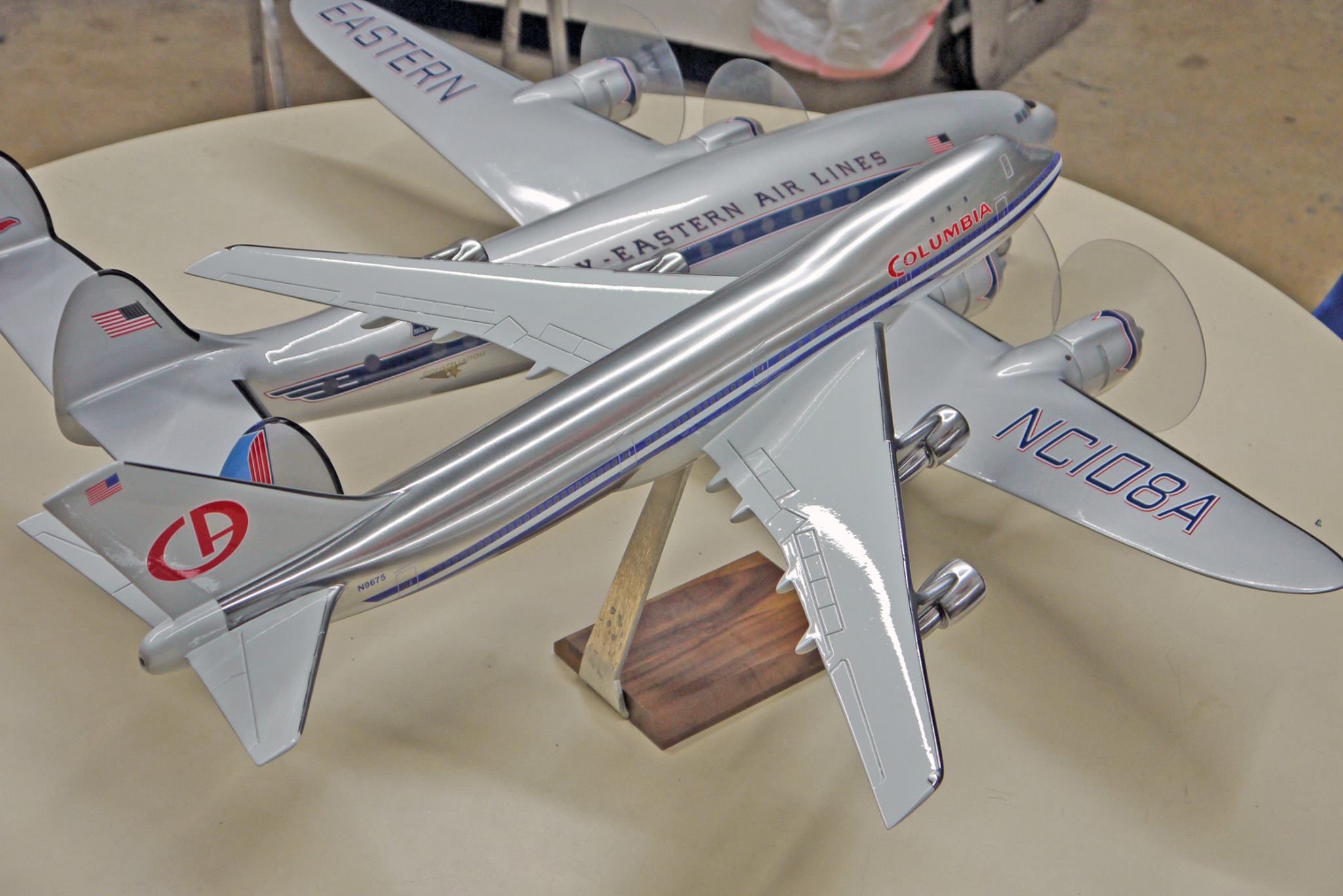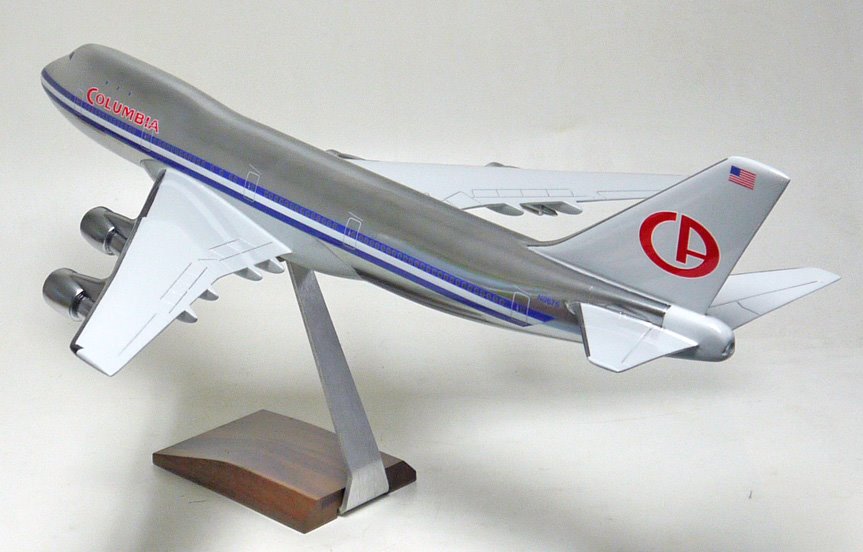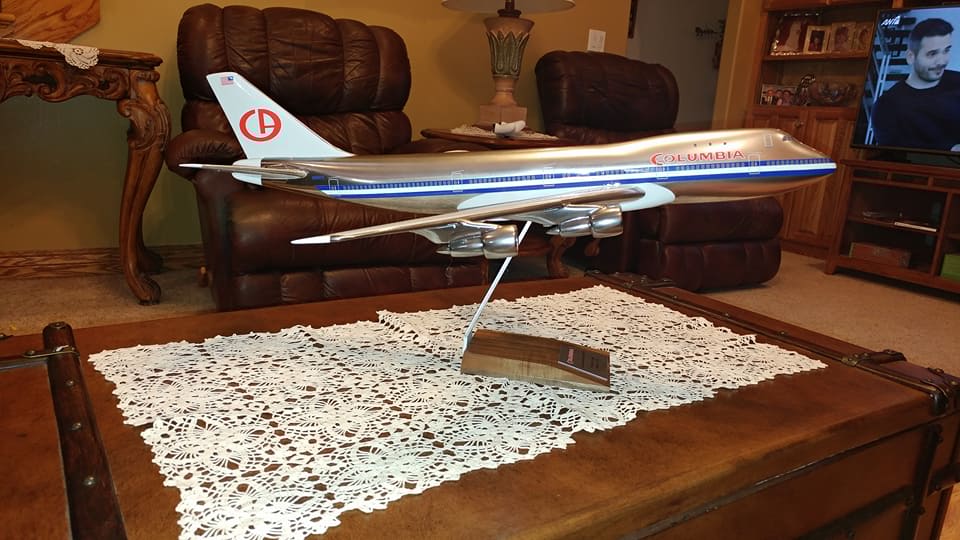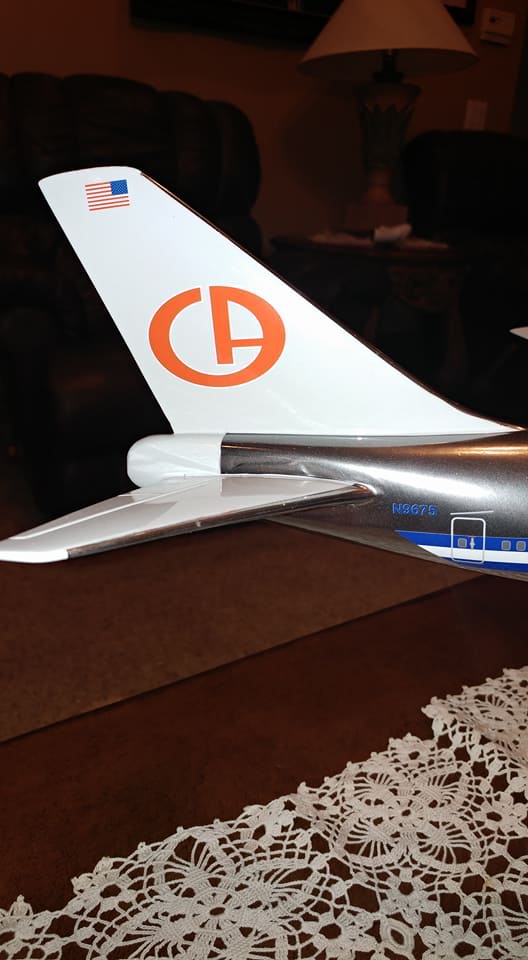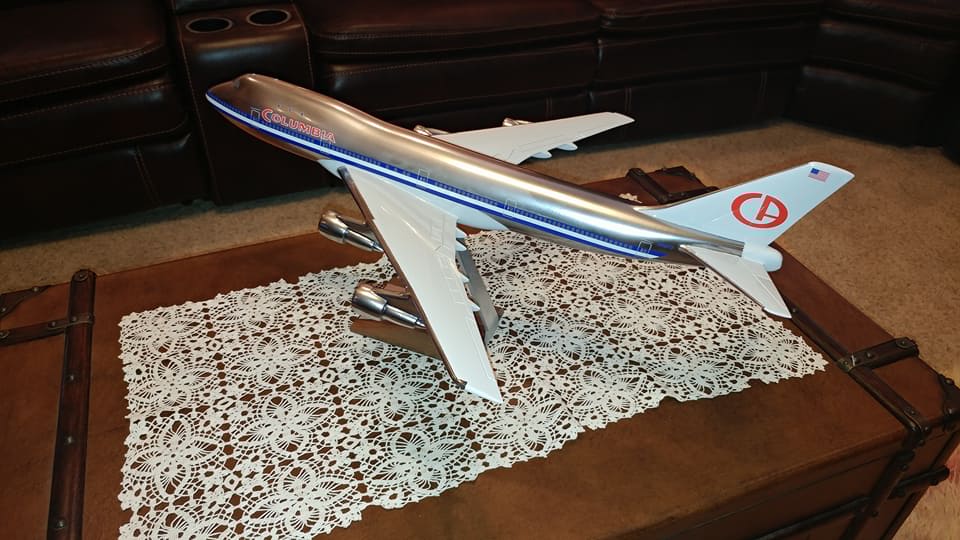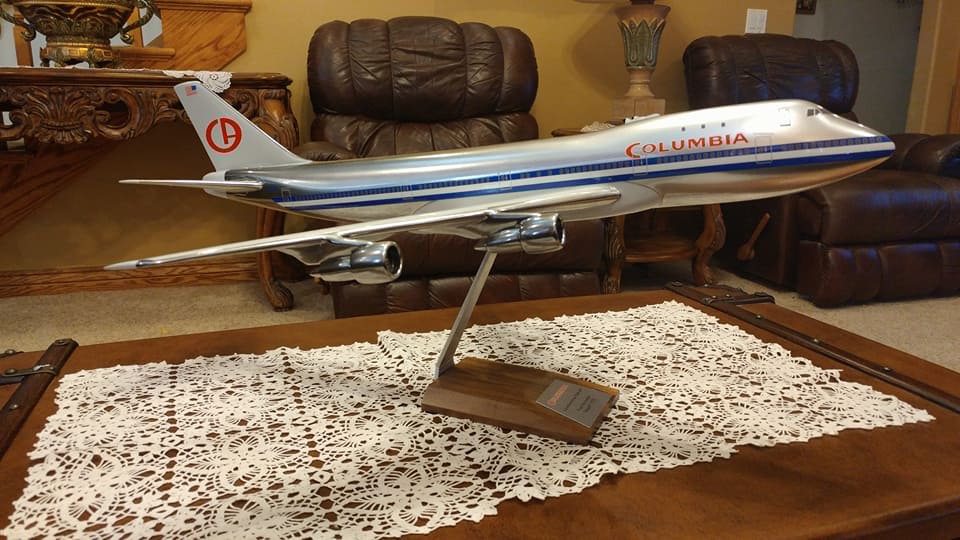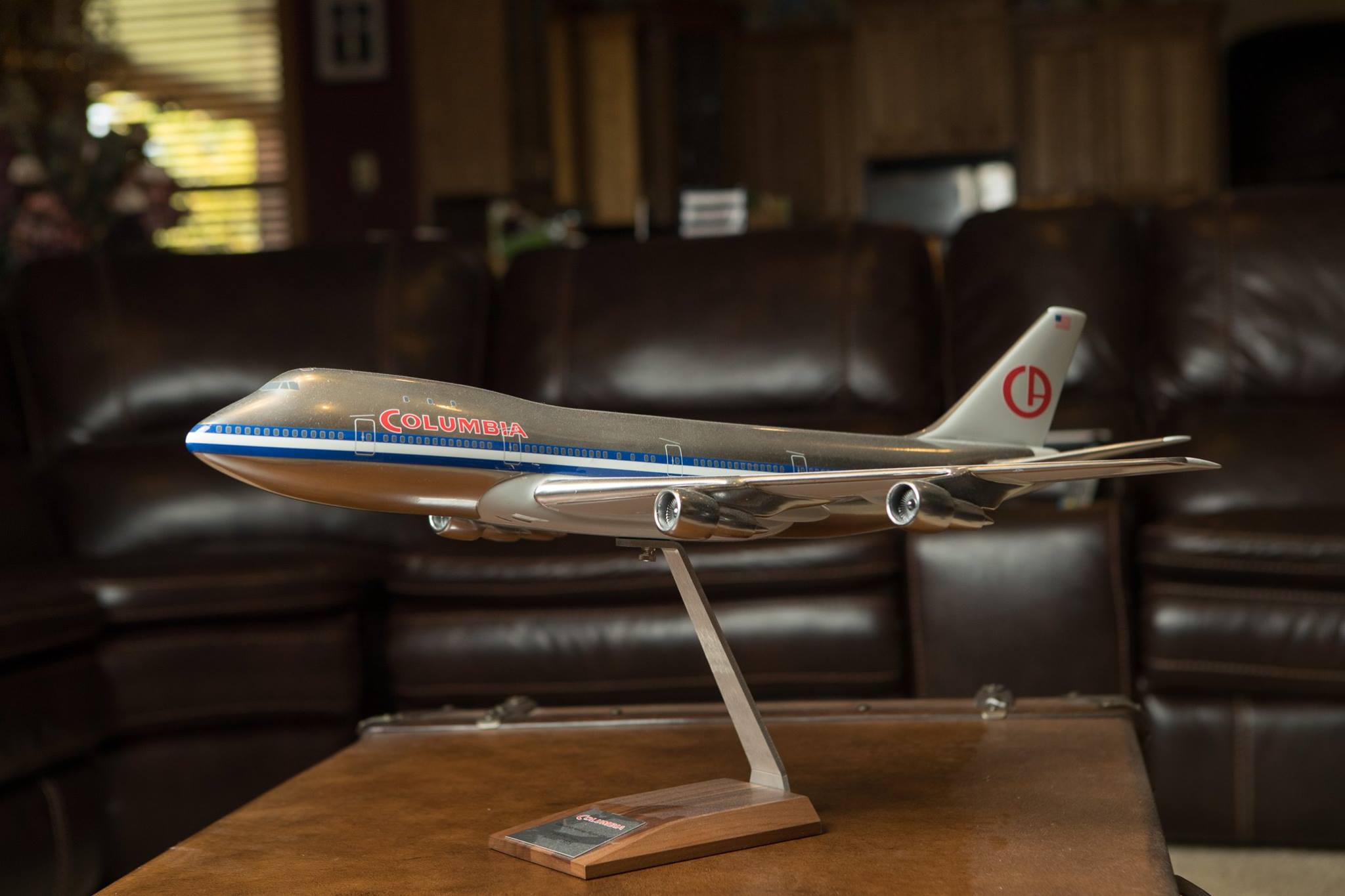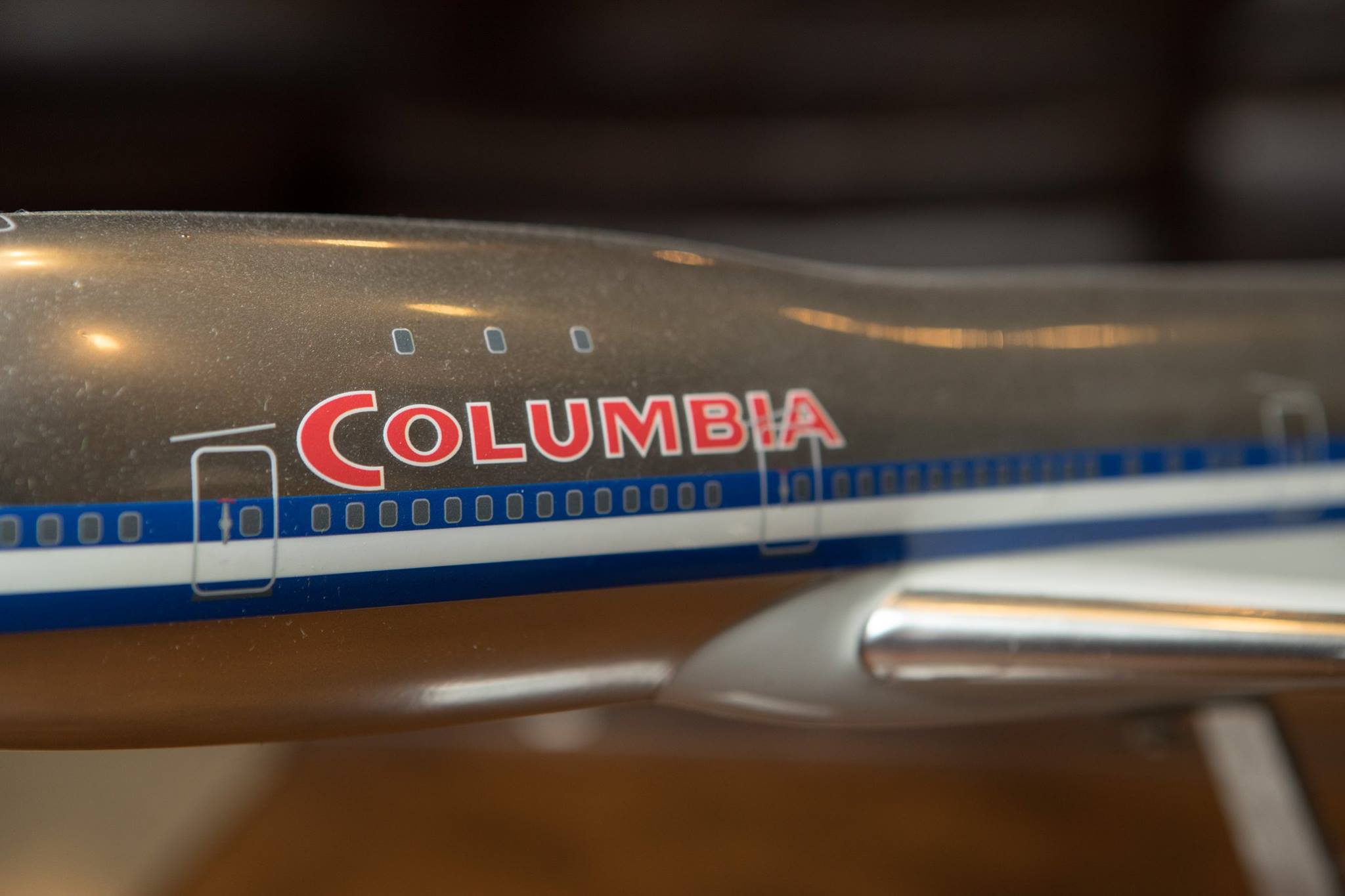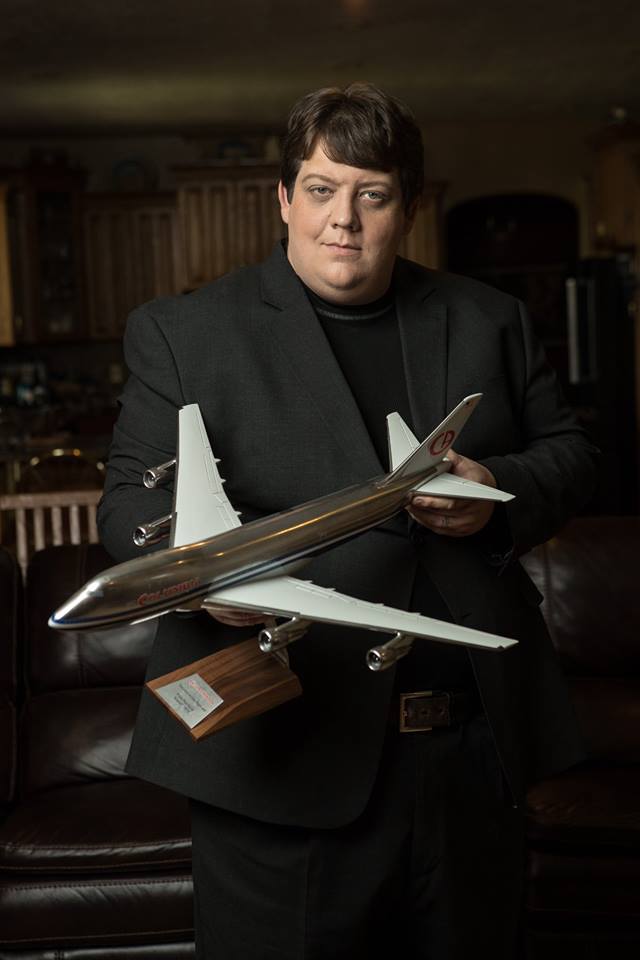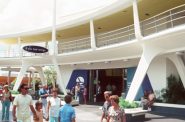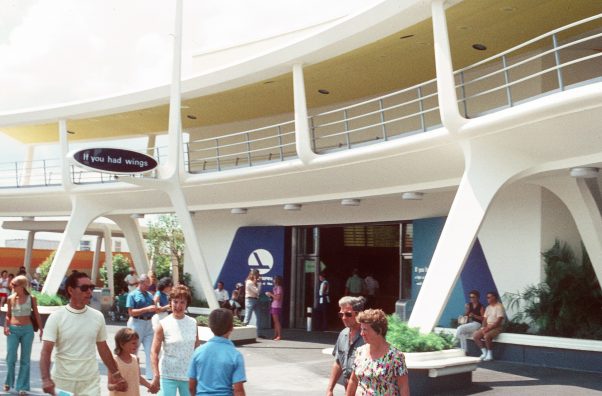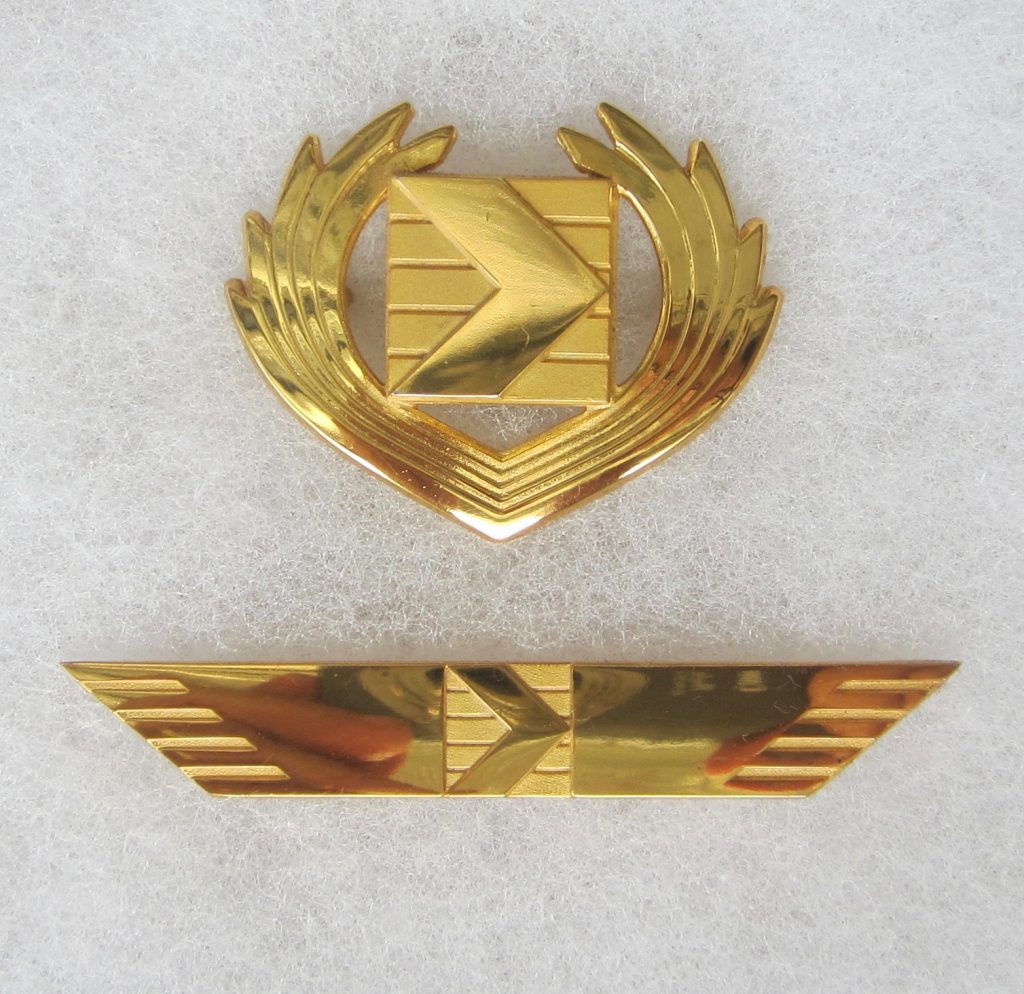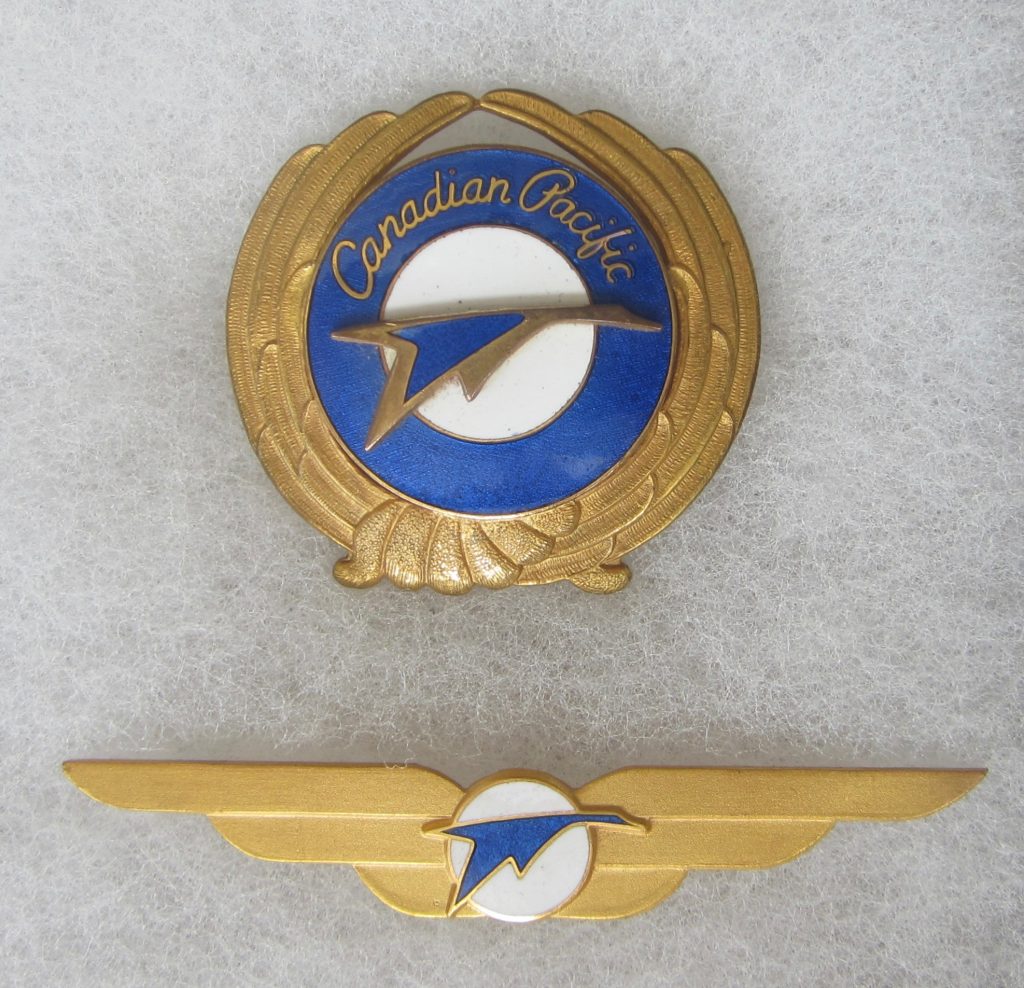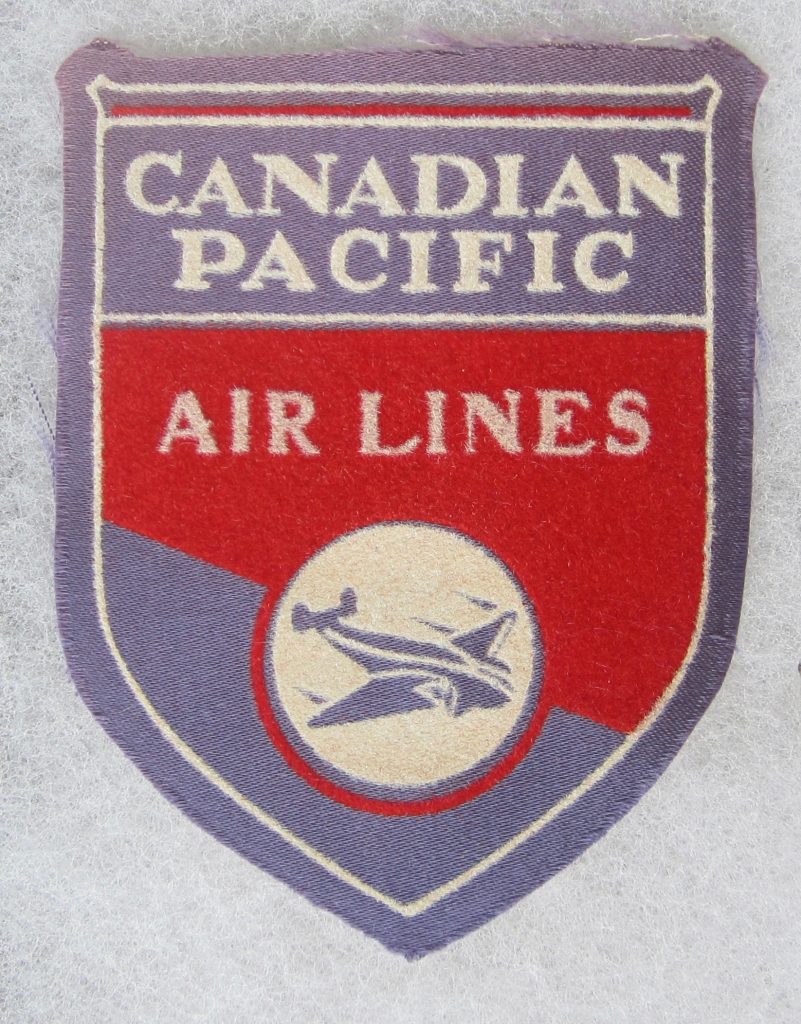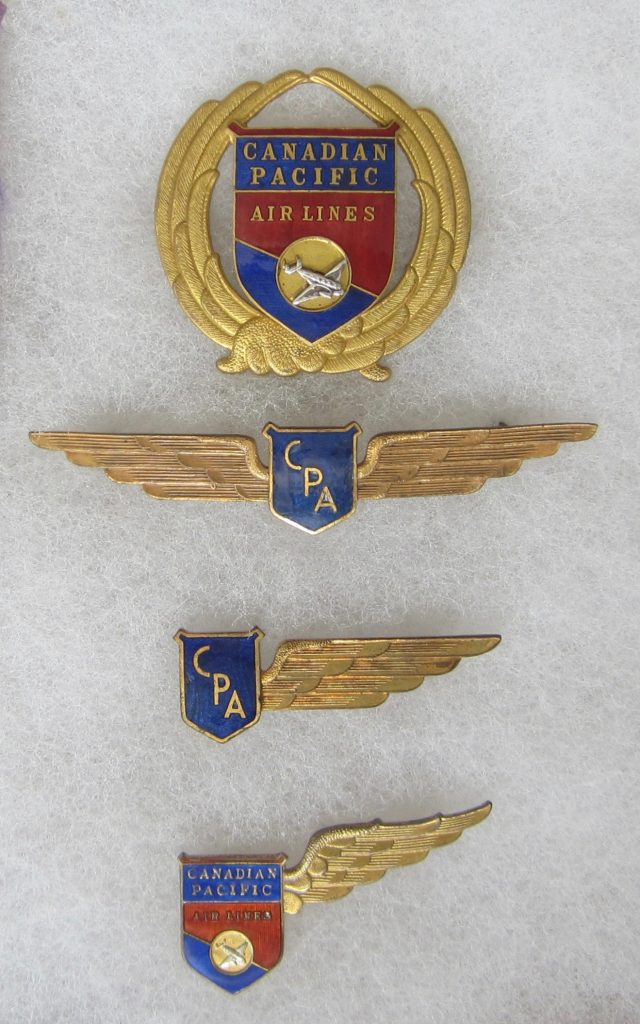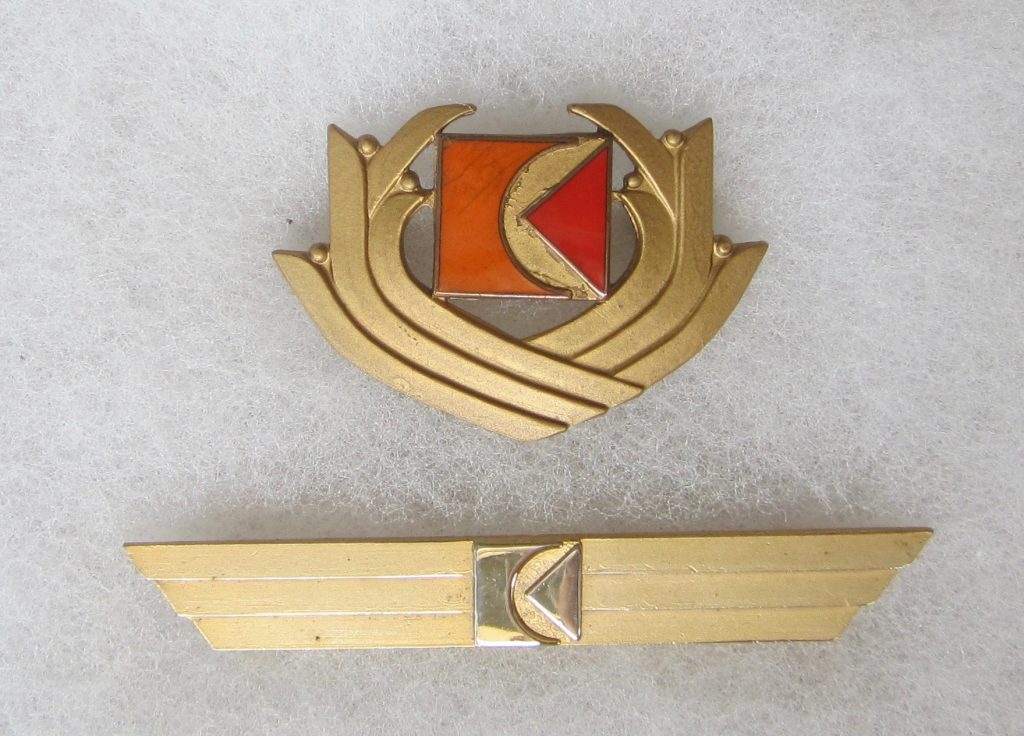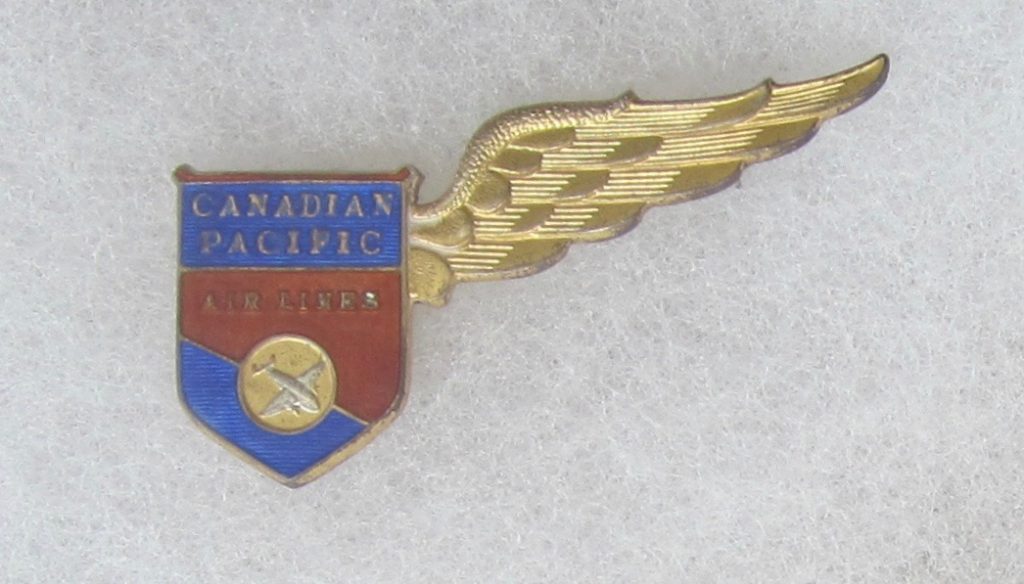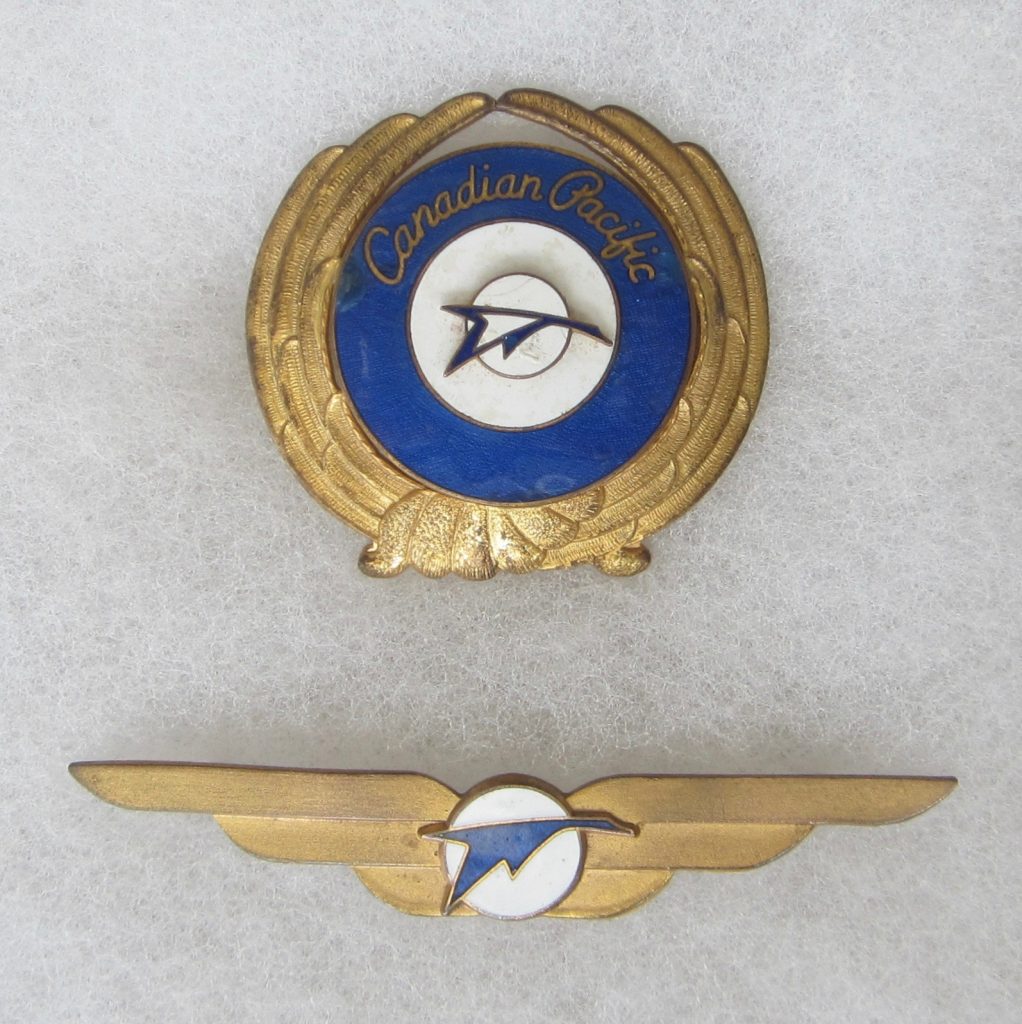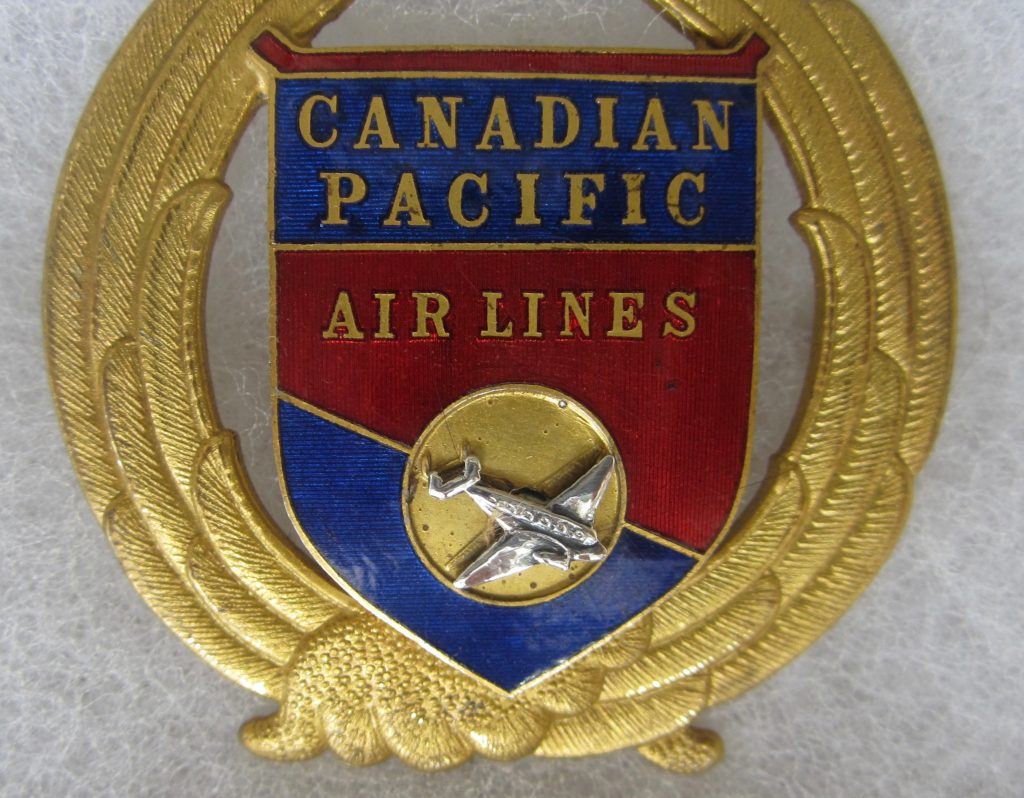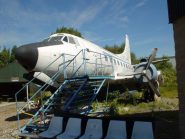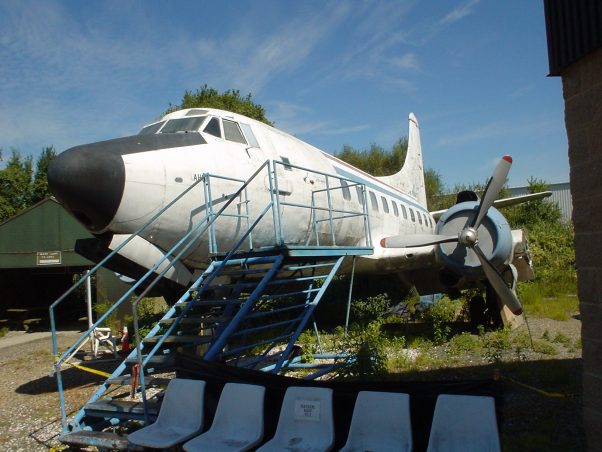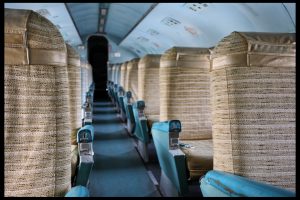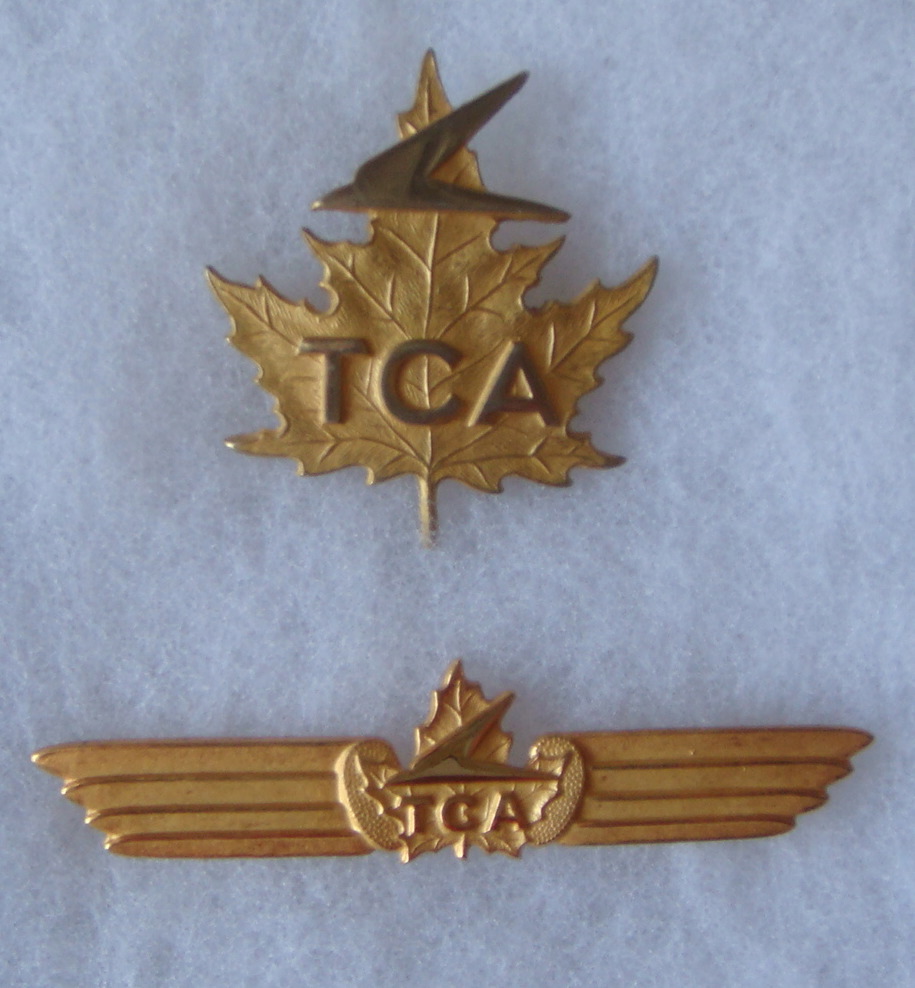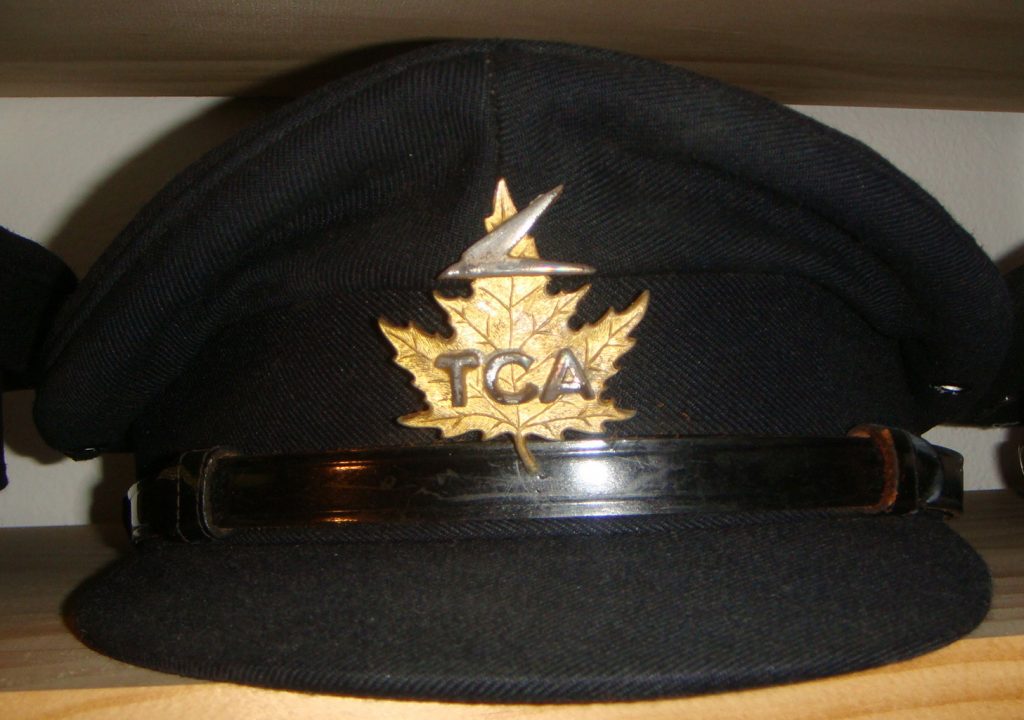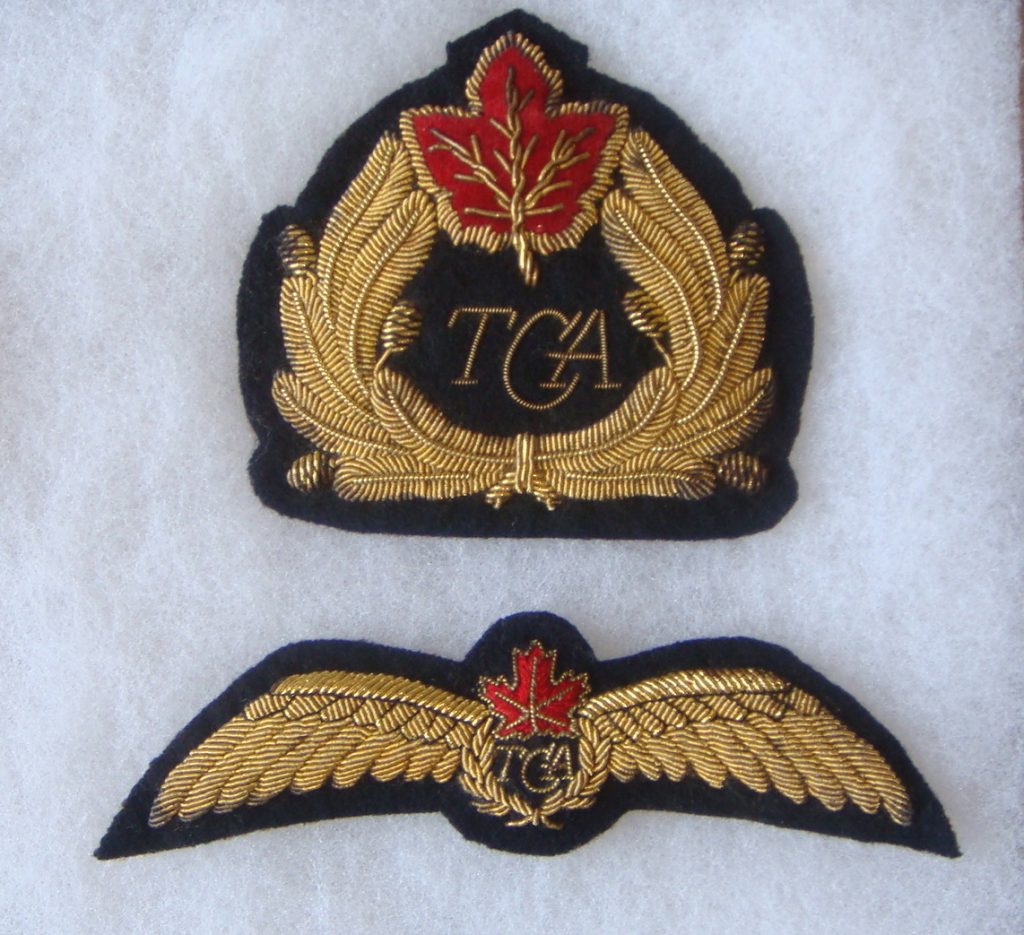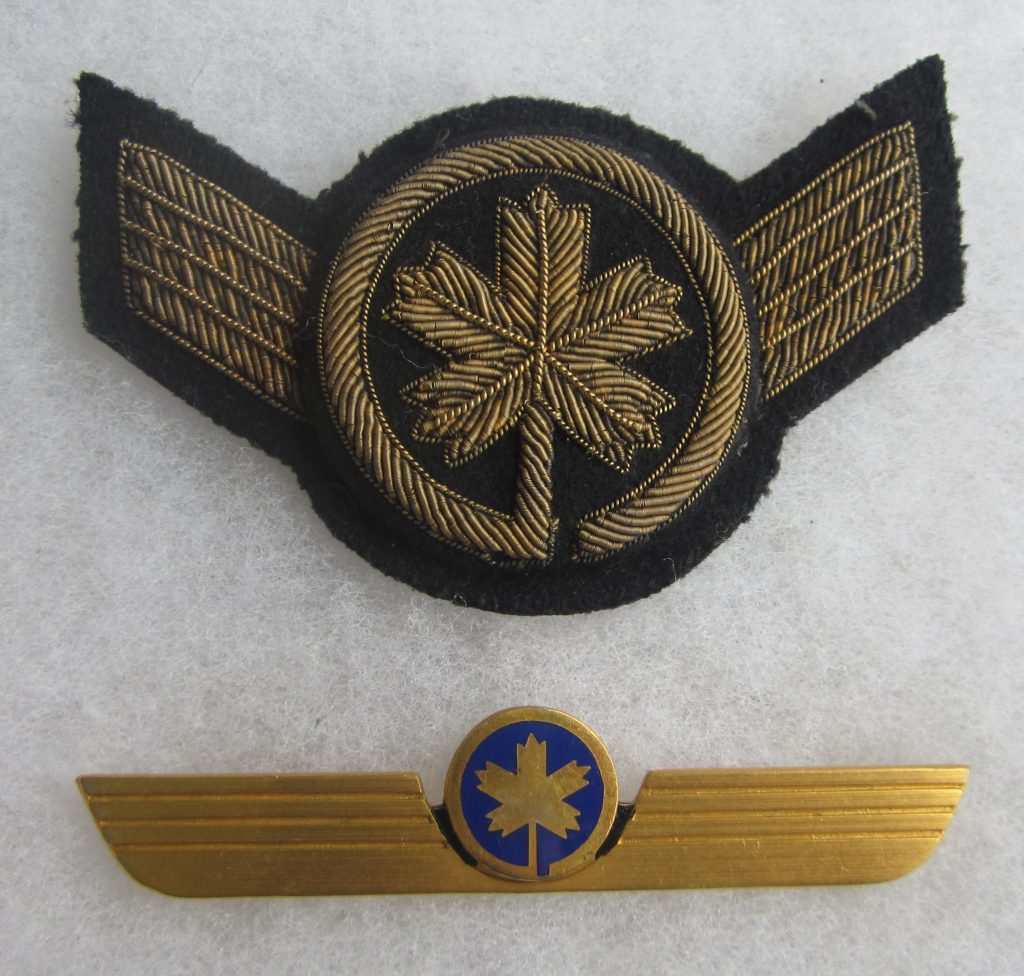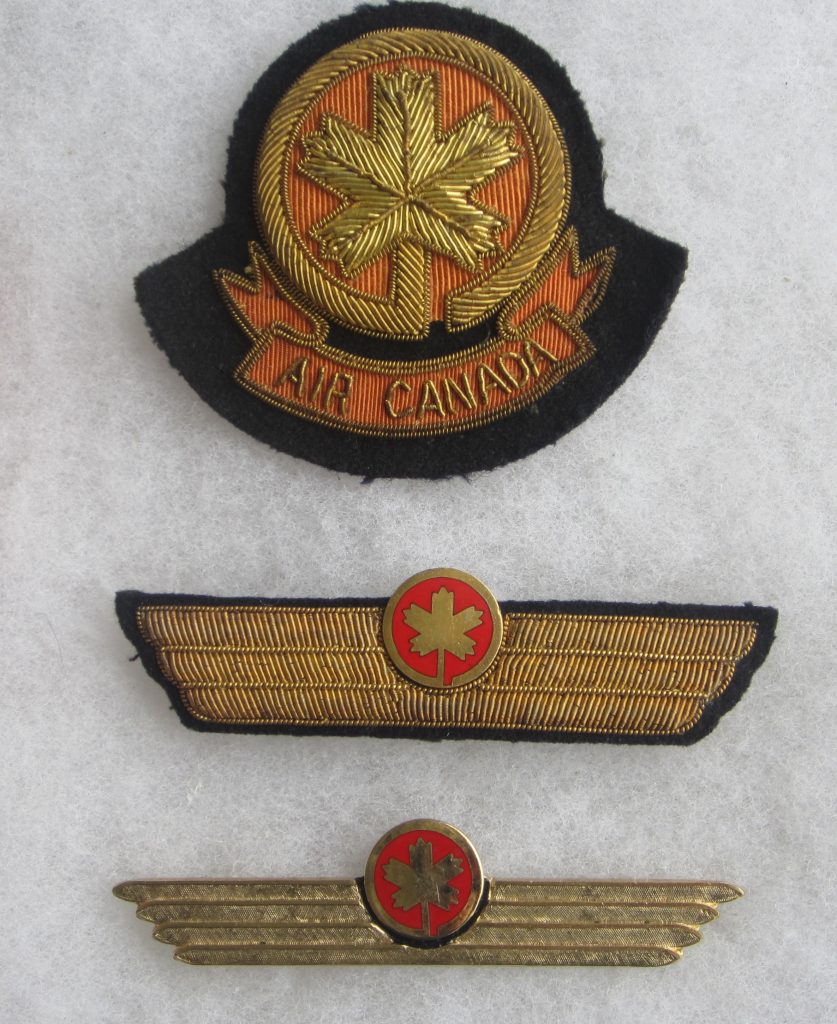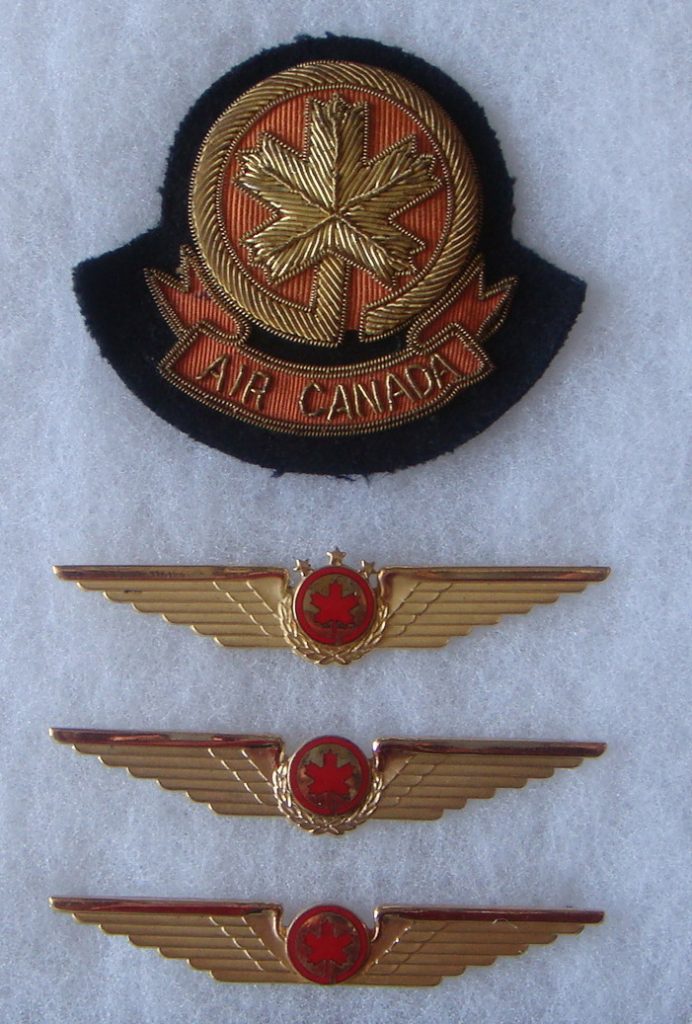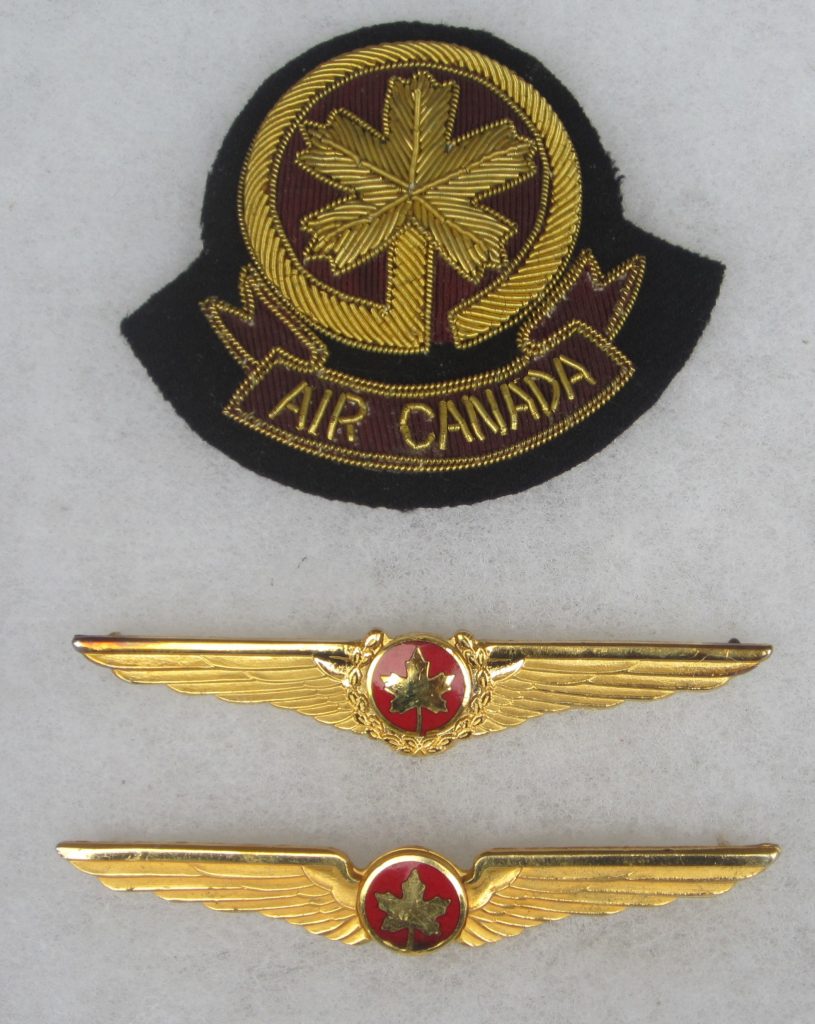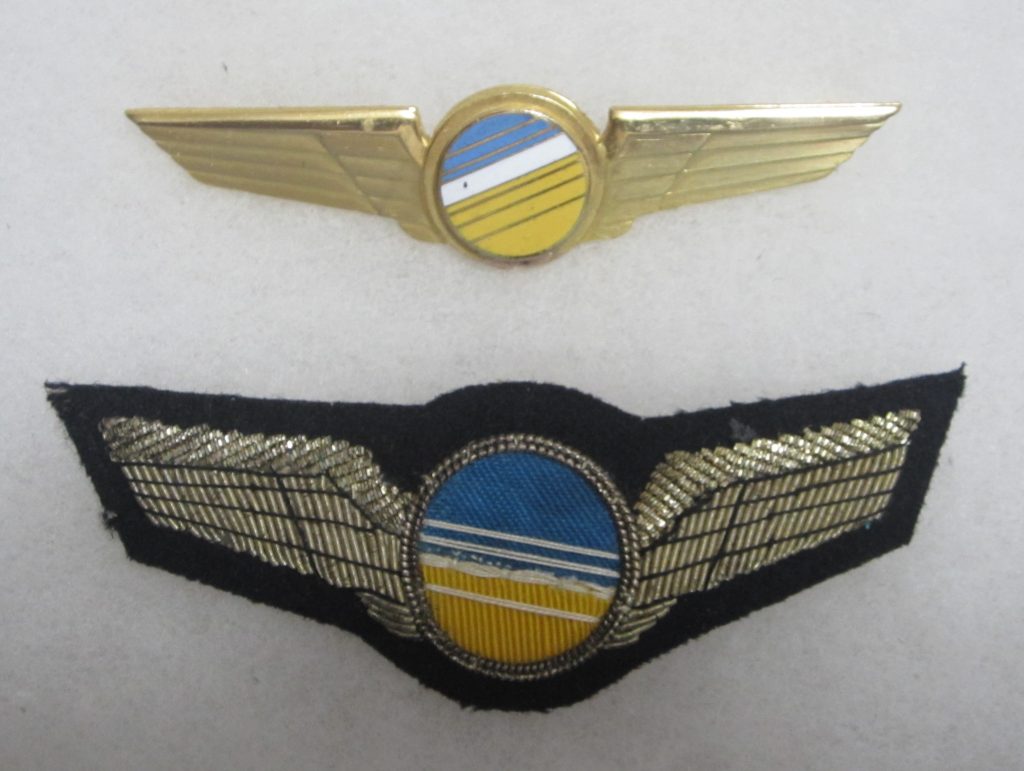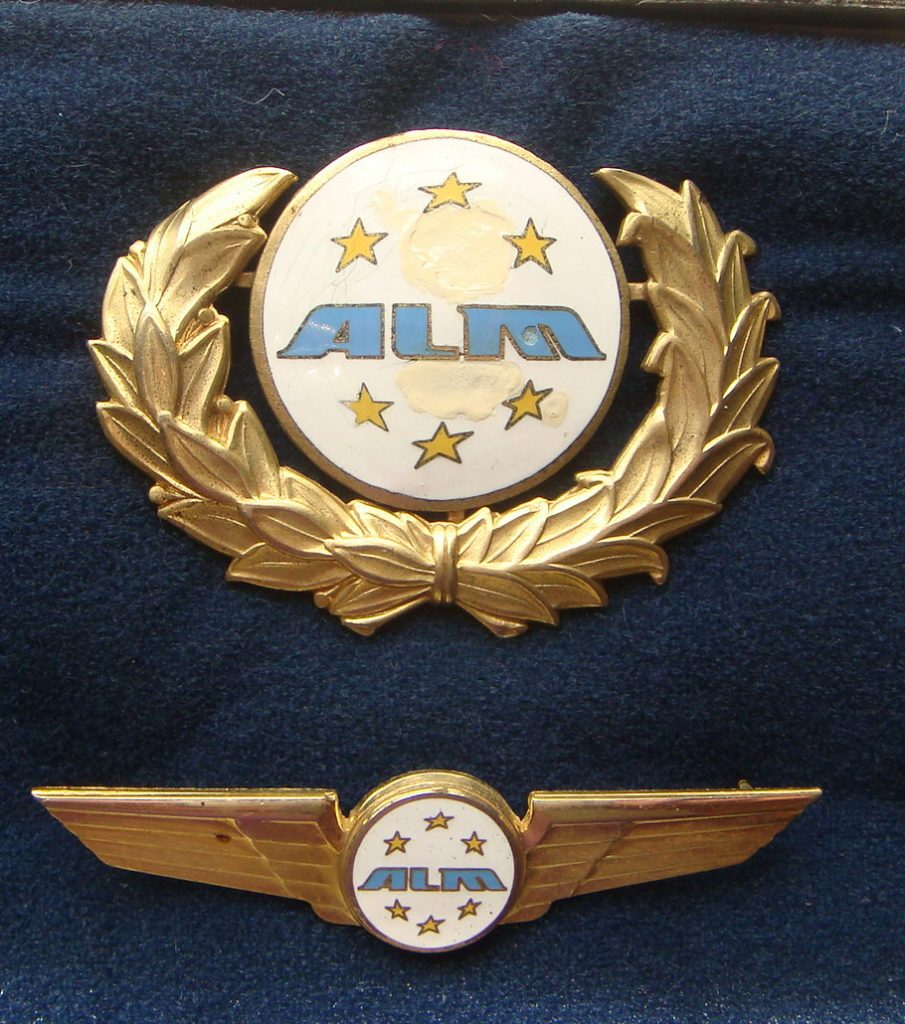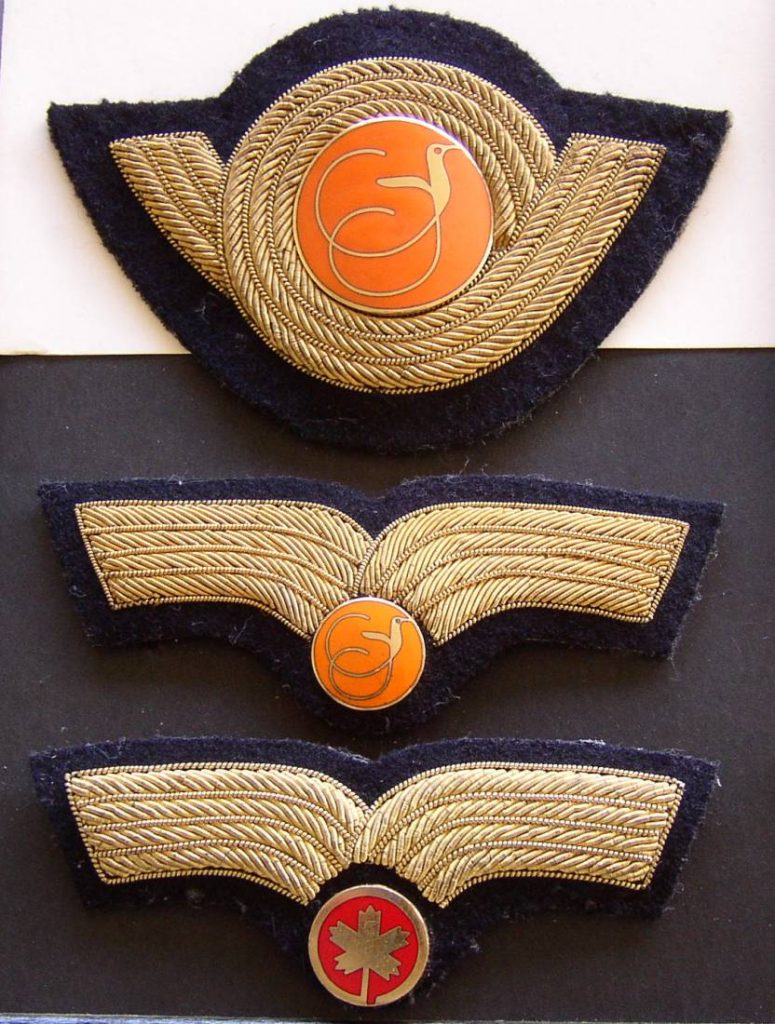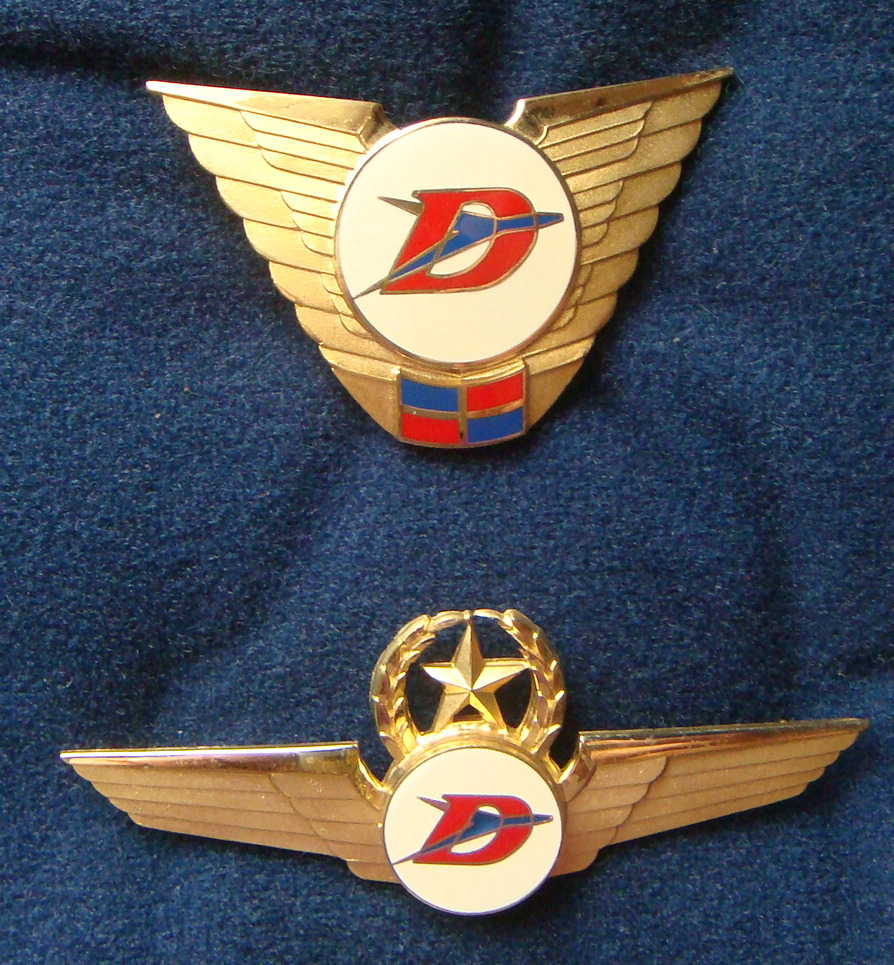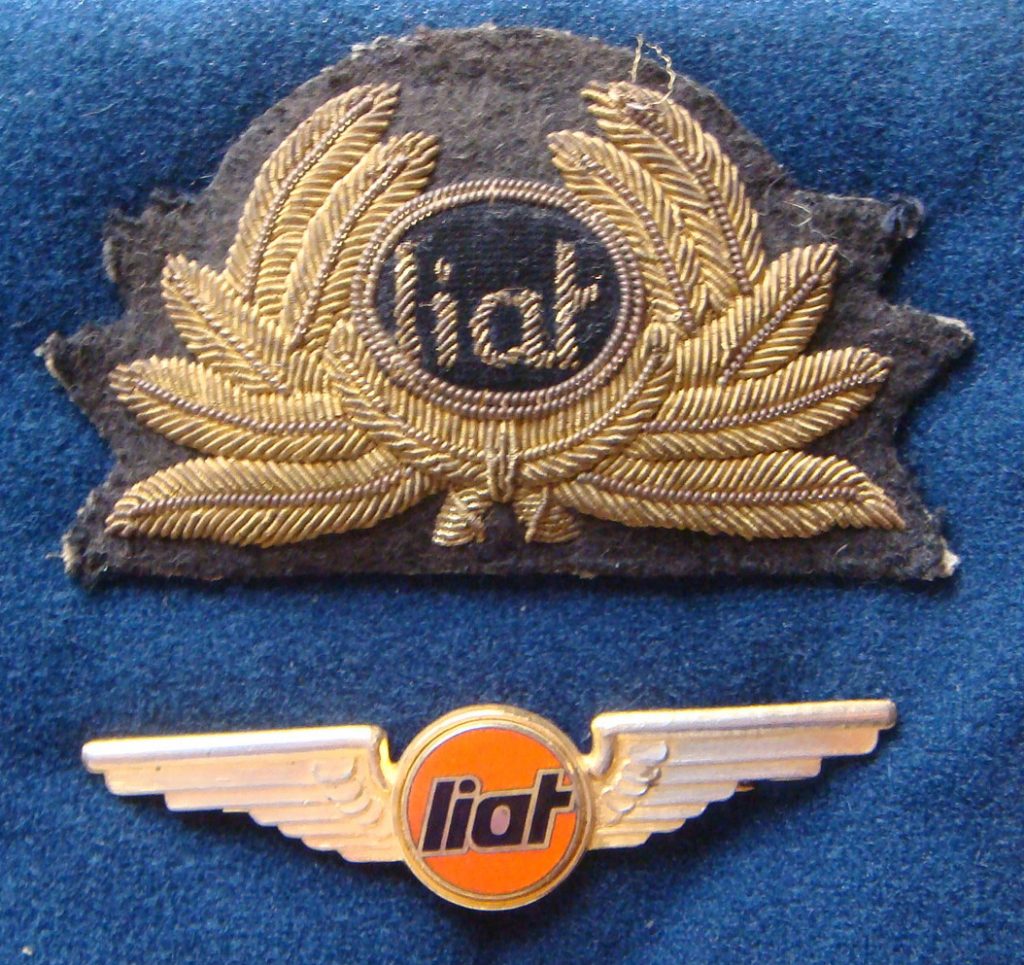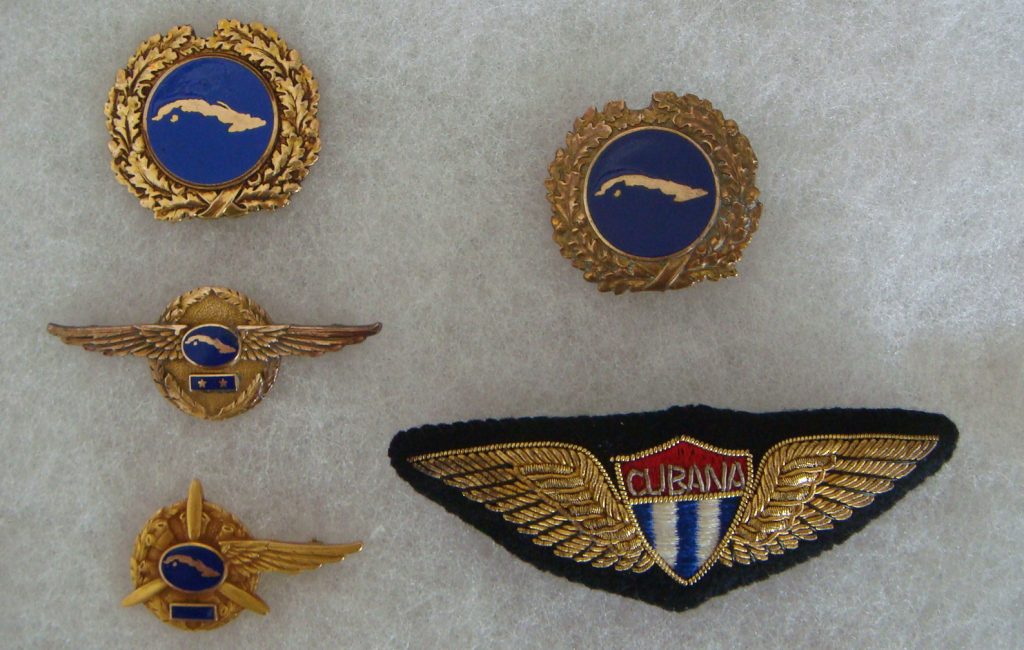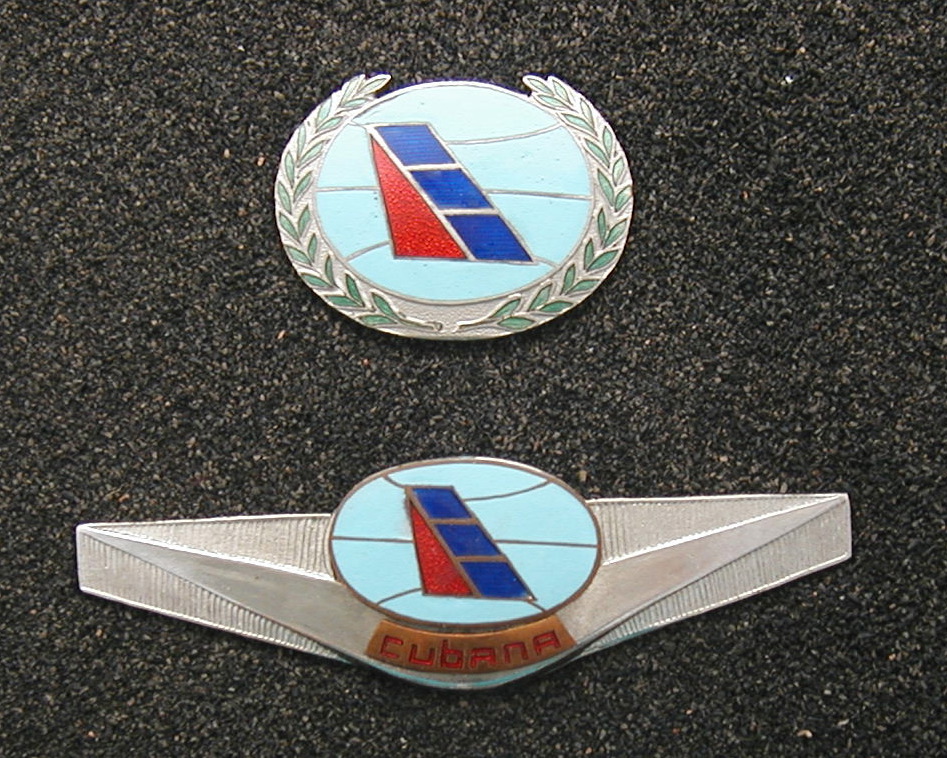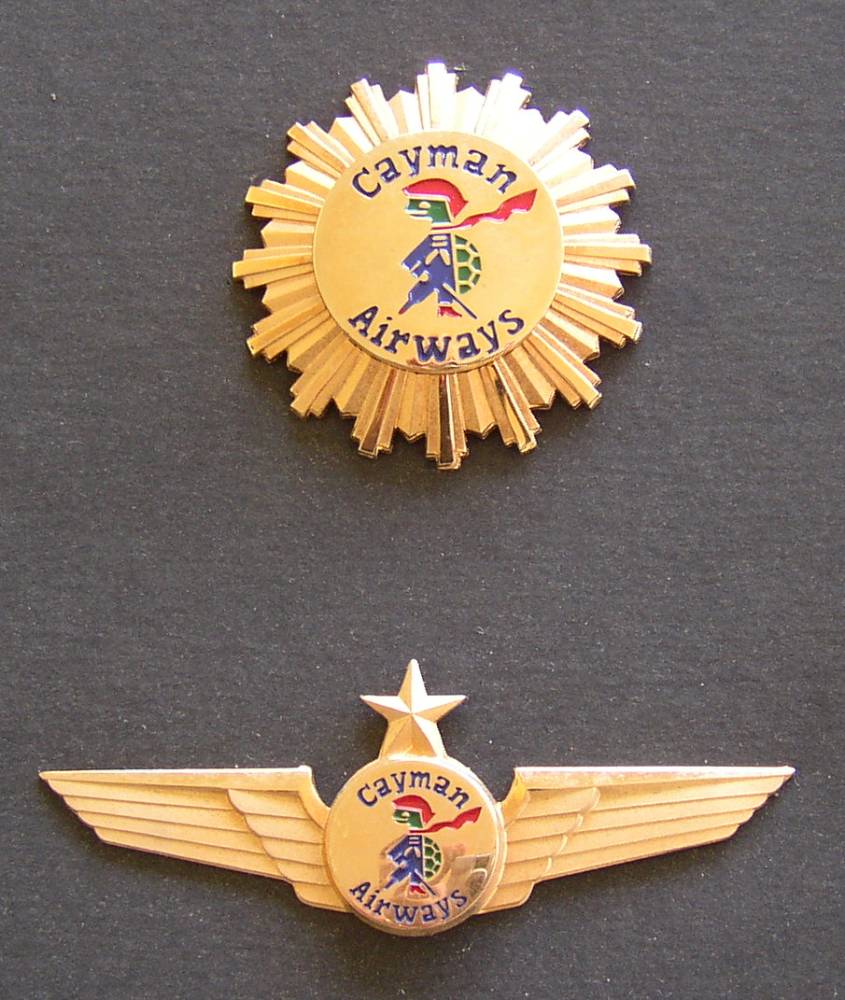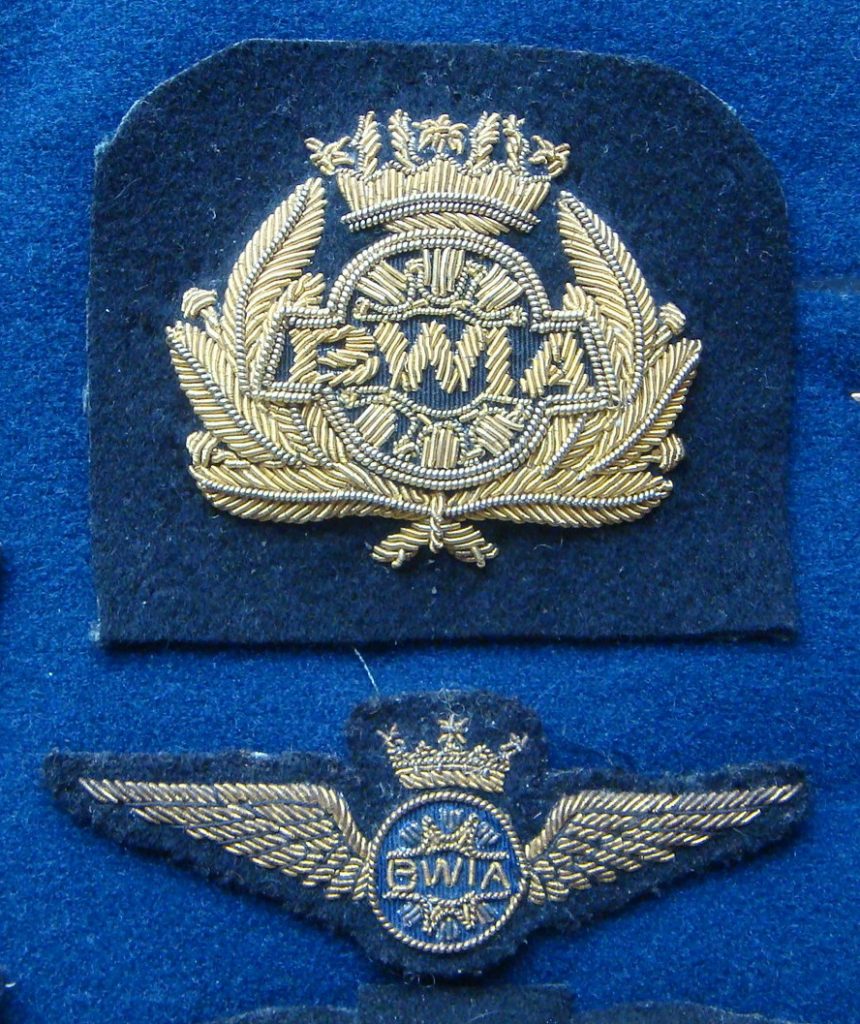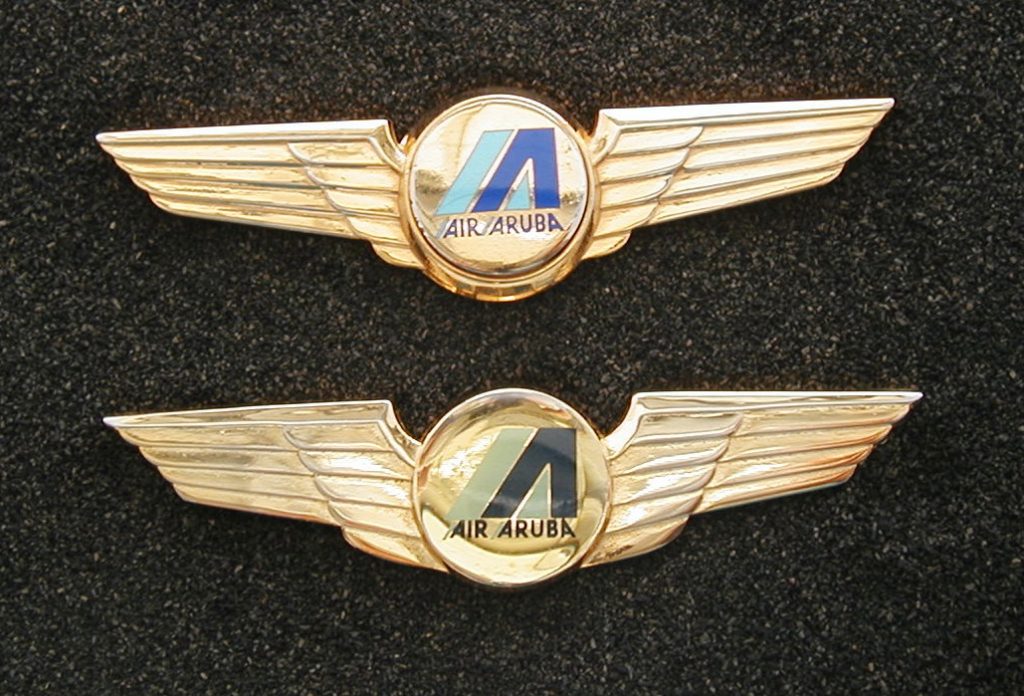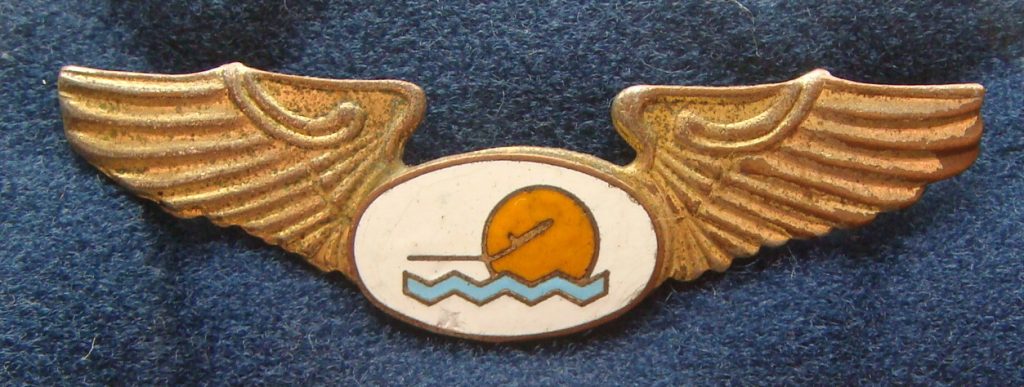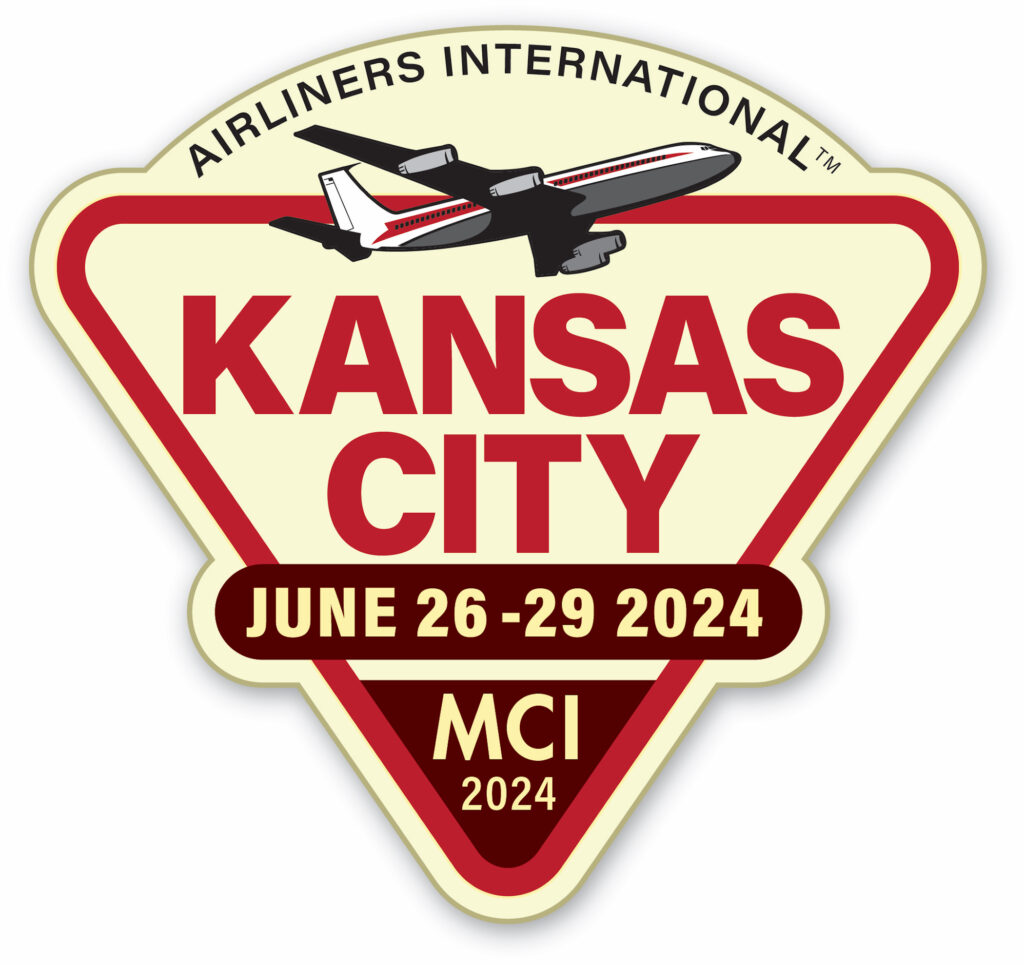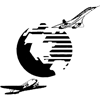Written by Marvin Goldman
EL AL Israel Airlines was founded in November 1948, six months after the birth of the State of Israel. The name ‘EL AL’ is taken from the Bible’s book of Hosea and means ‘to the above’ or more poetically ‘to the skies’.
To help identify the dates of postcard issuance and their aircraft images, I have provided information on dates of the aircraft types and different liveries utilized by EL AL over the years. EL AL also issued many advertising postcards, and these will be the subject of a separate article.
The airline started scheduled service in July 1949 with two Douglas DC-4 aircraft acquired used from American Airlines, and soon thereafter it added a handful of smaller World War II surplus Curtiss C-46 Commandos acquired from the Israel Air Force. EL AL did not issue any postcards of these two aircraft types during the years they were in service — 1949-1955. However, two airport cards show EL AL DC-4s among other aircraft, one in London (see the first image below) and one at Ciampino Airport in Rome, and I also have a 1949 postcard produced by the photographer of Lod Airport (now Ben-Gurion Airport) showing three early EL AL crew members with a portion of a DC-4 in the background (second image below).
Also, in 1979 EL AL issued an eight-postcard set showing art drawings of its aircraft by Israeli artist Danny Shalom. The set included a military C-54 (labeled a ‘DC-4’ and registered 4X-ACA) utilized on a special flight in September 1948 to bring Chaim Weizmann from Geneva to Israel to be sworn in as Israel’s first President, which aircraft was the first to bear the ‘EL AL’ name. Another postcard in the set shows an EL AL C-46 (third image below).
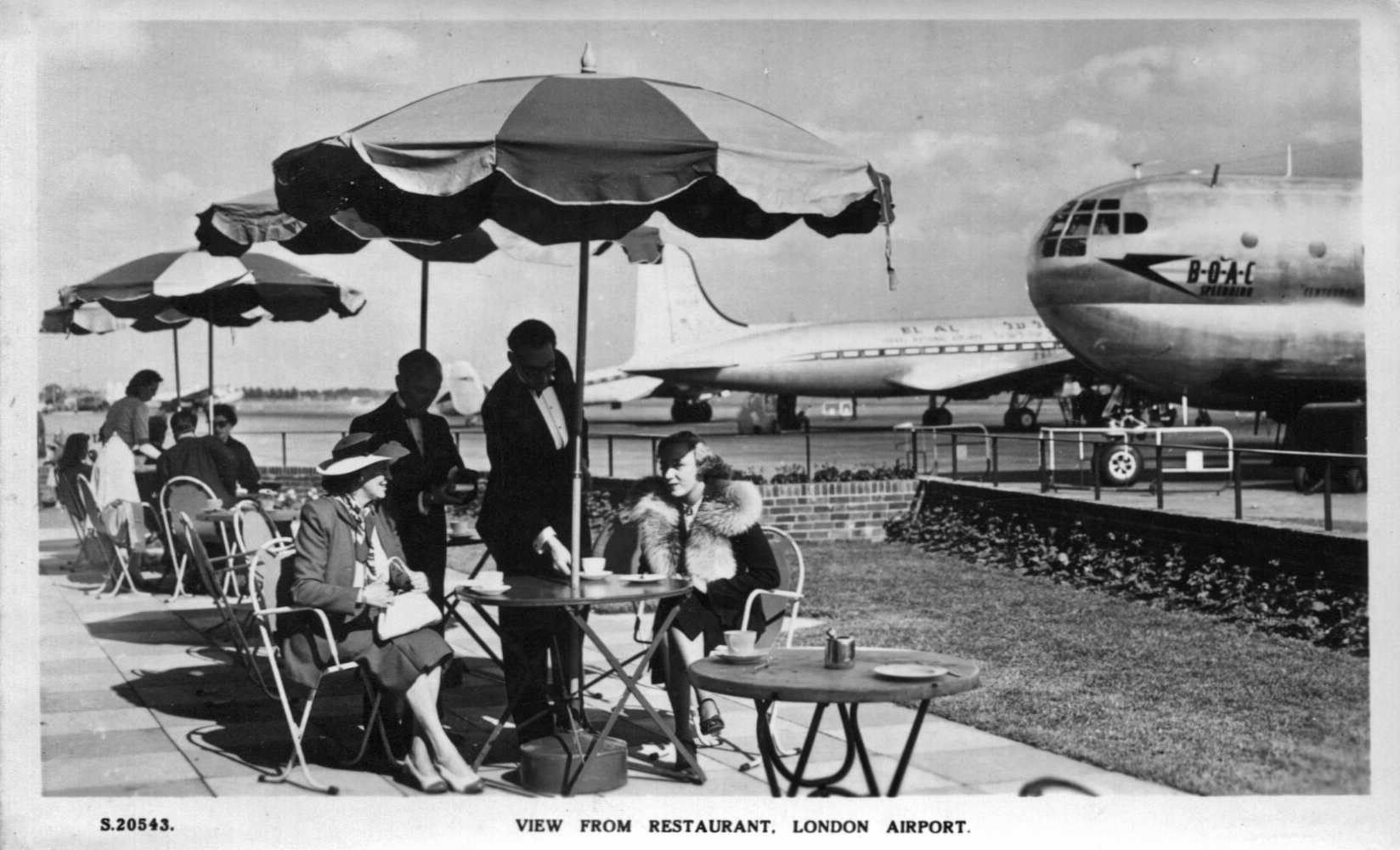
EL AL Douglas DC-4 (either 4X-ACC or 4X-ACD) at London Airport, behind the BOAC B377 Stratocruiser. Postmarked 26 July 1951. Pub’r: Bridge House S20543.
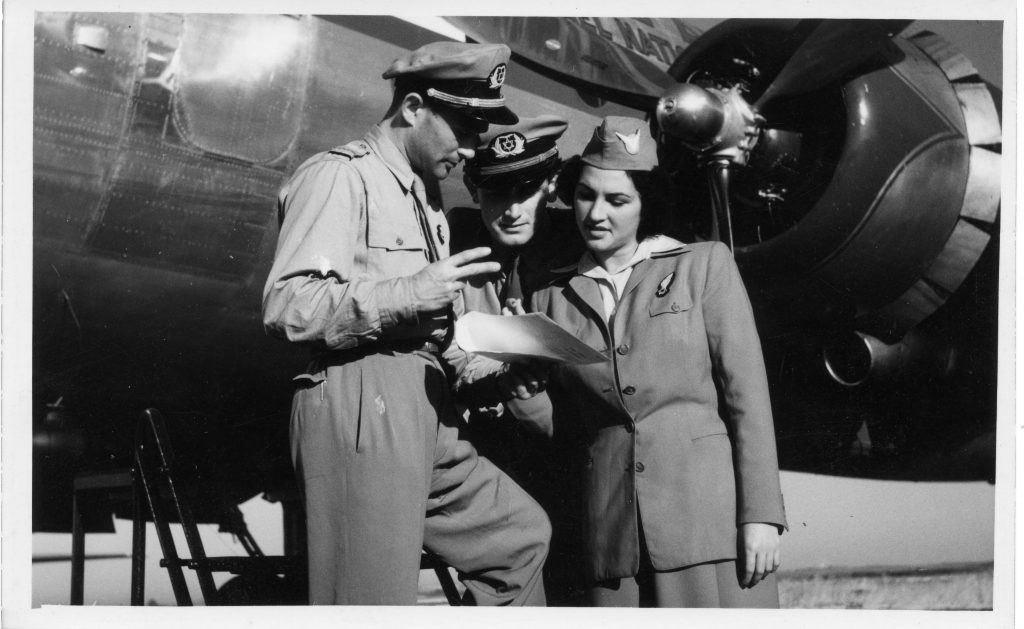
EL AL DC-4 (either 4X-ACC or 4X-ACD) with early crew members including its first steward, Herb Kweller, in center, and stewardess Miriam Gold on right. Published by photographer of Lod Airport (now Ben-Gurion Airport), Tel Aviv, 1949.
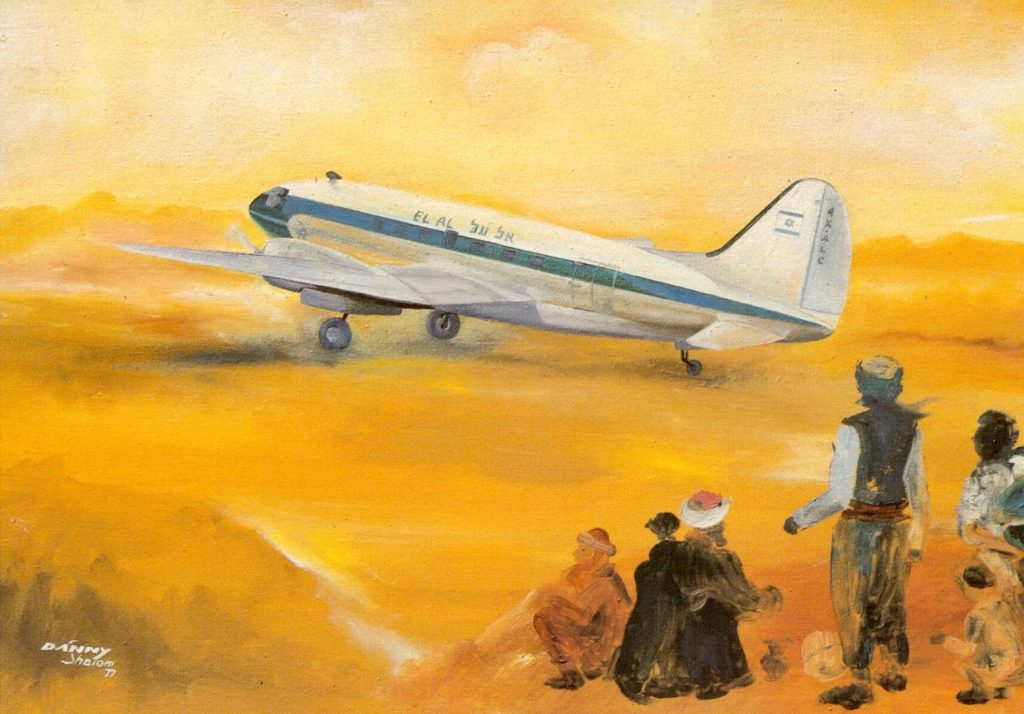
EL AL Curtiss C-46 Commando, 4X-ALC, with Yemenite Jews awaiting airlift to Israel. Art by Danny Shalom. Airline Issue, 1979. (Aircraft utilized on the airlift actually bore substitute titles, such as ‘Near East Air Transport’).
The earliest postcards issued by EL AL itself featured its Lockheed Constellation aircraft which served the airline from 1951 to 1961. Here is the first postcard issued by EL AL itself.
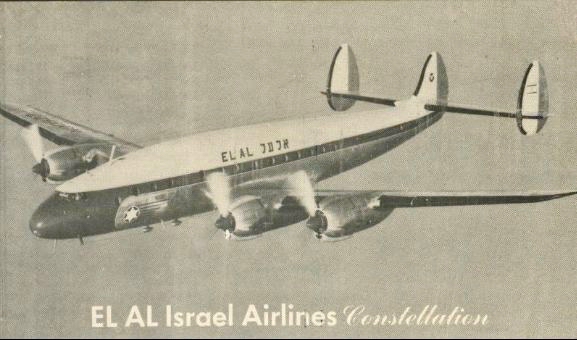
EL AL Lockheed L149 Constellation, in Test Flight as N90827 in Southern California, March 1951, later registered 4X-AKA. EL AL New York Office Issue, 1951.
EL AL issued two other Constellation postcards in the early 1950s. Each is a graphic art card showing an aircraft with a map of Israel in the background. Here is one of them.
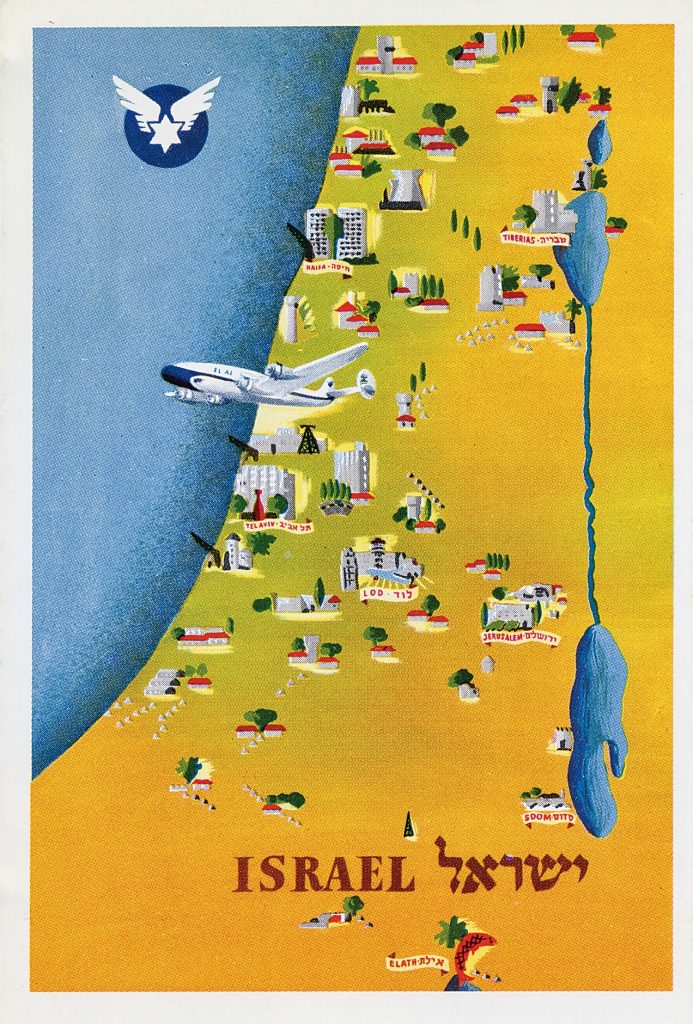
Saw one postmarked 3 April 1957
In addition, an EL AL Constellation is shown on airport postcards at Zurich (at least four different cards), Rome and Johannesburg – Palmietfontein.
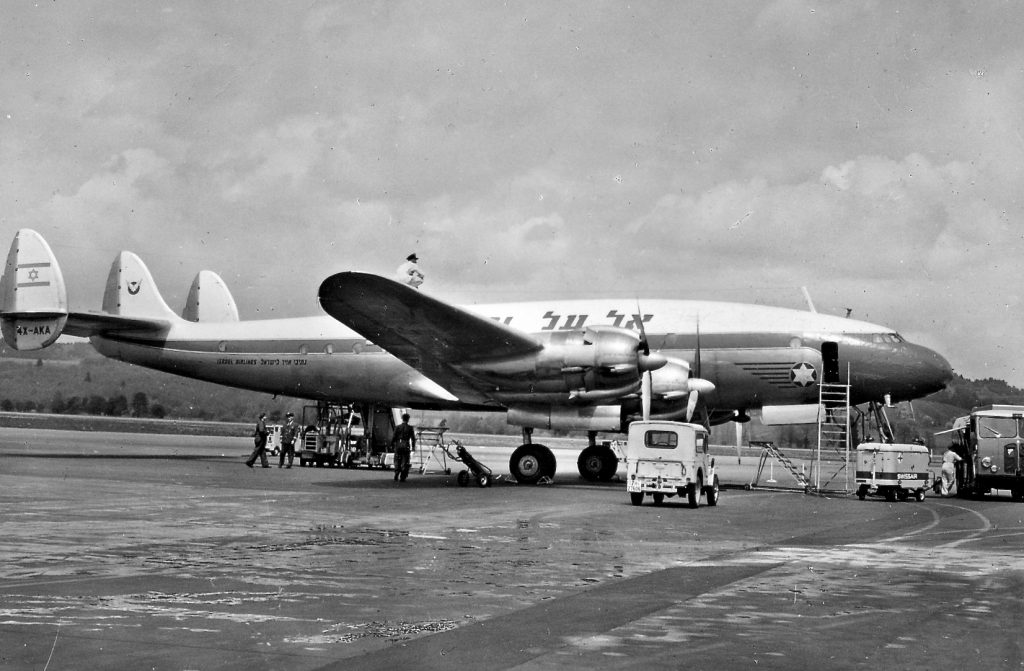
EL AL Lockheed 149 Constellation, 4X-AKA, at Zurich. Pub’r WBZ, Zurich, no. VF19.
In December 1957 EL AL introduced the new jet-prop Bristol Britannia, becoming the first airline outside England to do so. Simultaneously EL AL launched a broad advertising campaign, which included the following rare detachable group of six Britannia postcards.
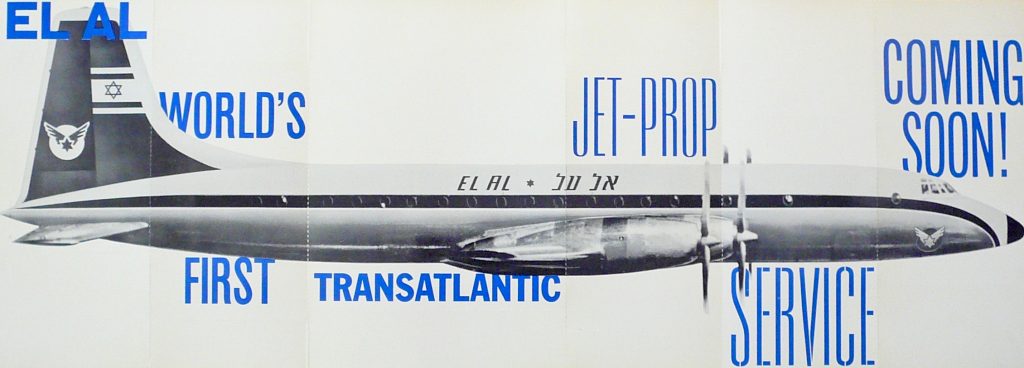
EL AL Bristol Britannia. Airline New York Office Issue, 1957. This is a composite card, 10” x 28” (26 x 79 cm.), consisting of six detachable 4-1/4” x 7” (11 x 23 cm.) postcards (5 vertical; 1 horizontal), each described on the back as ‘a piece of the plane’.
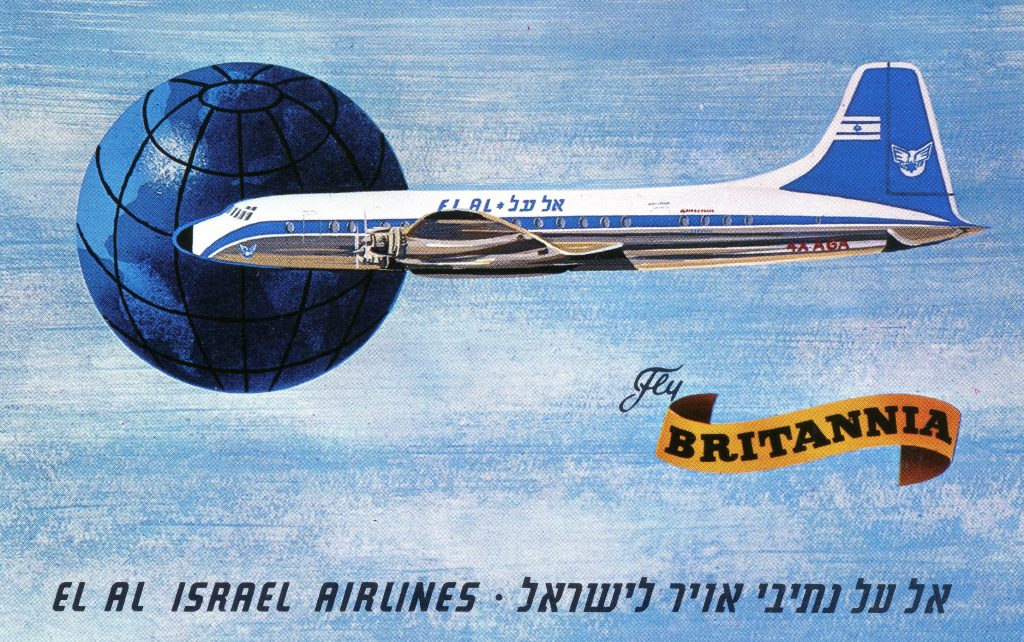
EL AL Bristol Britannia, ‘Fly Britannia’. Airline Issue, probably by Paris Office, about 1958. Pub’r Carisse.
The Britannia’s reign was short-lived, with the last departing EL AL’s fleet in early 1967. The pure jet era supplanted the front-line role of the Britannias soon after the Britannias entered service. EL AL’s pure jet era began with its acquisition of Boeing 707s in 1961 and Boeing 720B’s in 1962. Since 1961, EL AL has acquired only Boeing aircraft.
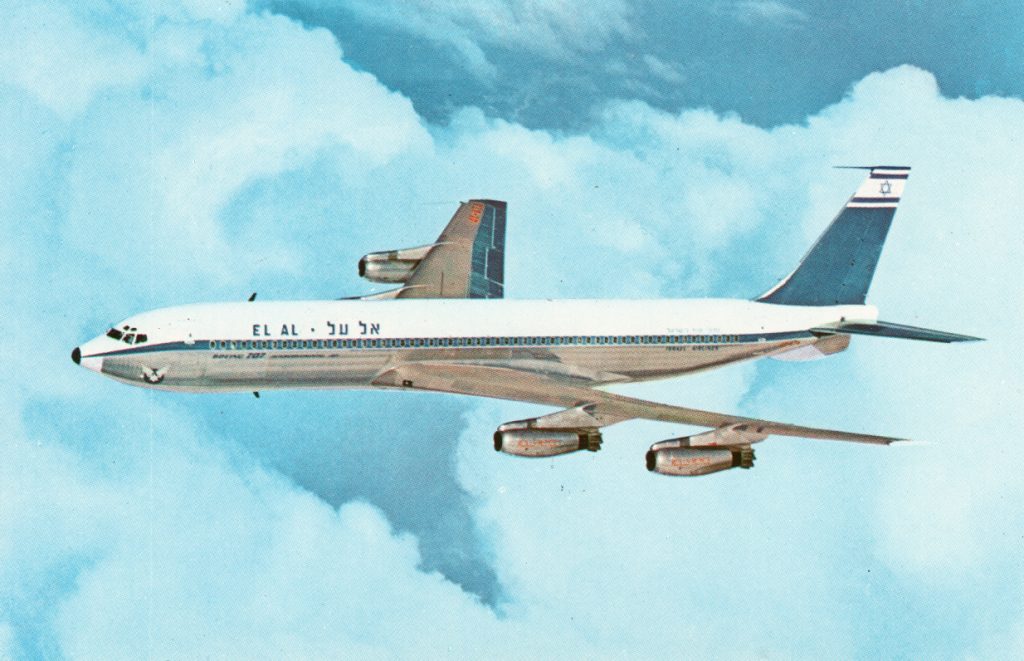
EL AL Boeing 707-420, in original livery. Airline Issue, early 1960s. There are three versions of this postcard, each with a different imprint on the back, and a similar postcard with clouds only partially covering the bottom.
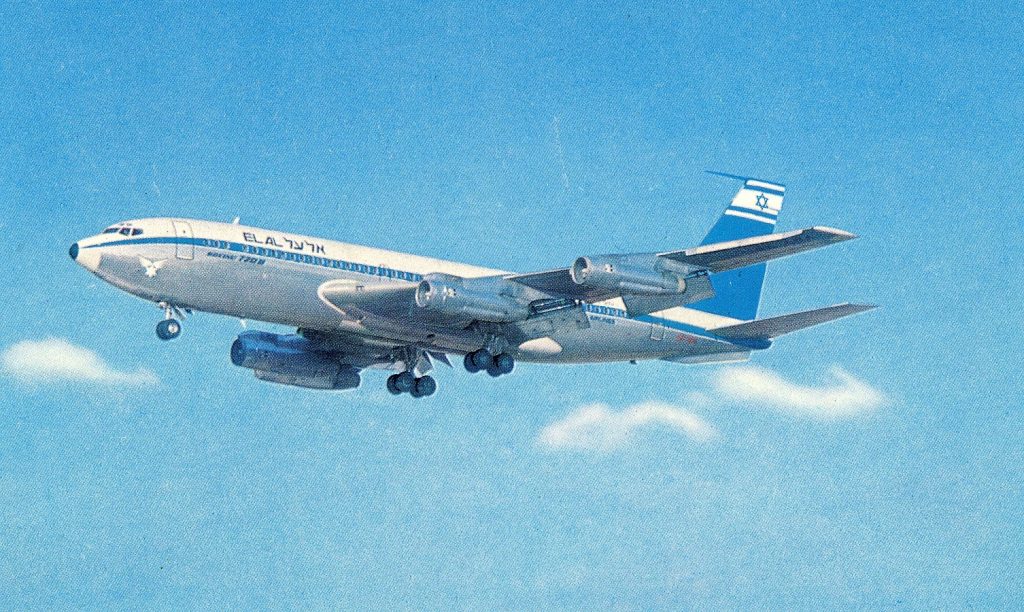
EL AL Boeing 720B, in second 707/720 livery adopted by 1966. Airline issue.
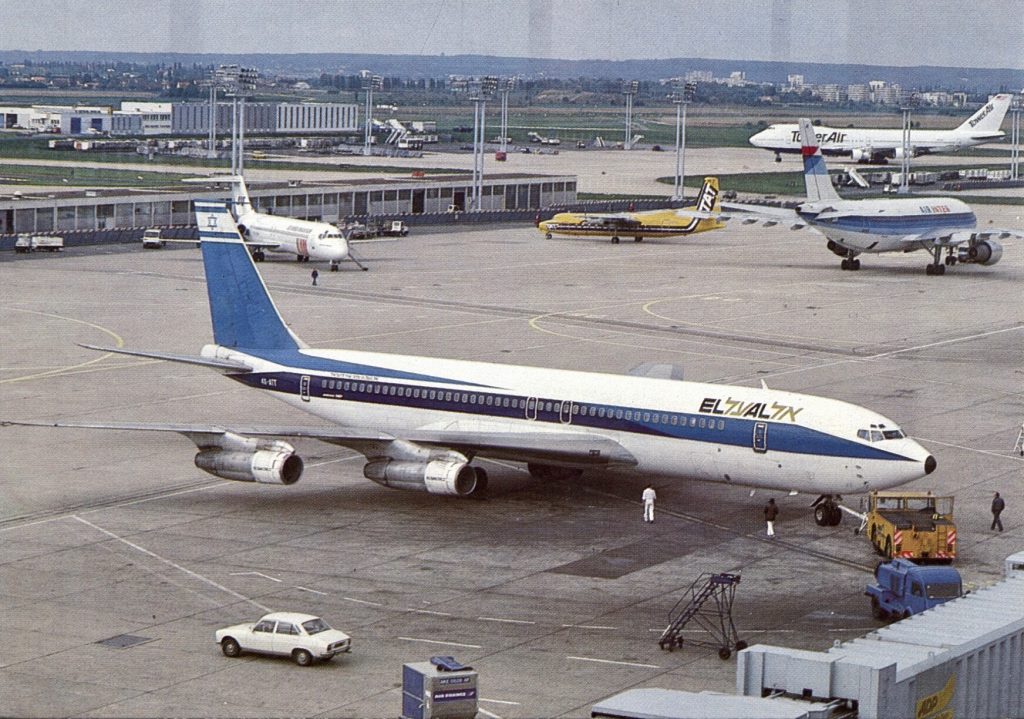
EL AL Boeing 707-320B, 4X-ATT, at Paris-Orly, in third 707/720 livery adopted in 1971. Pub’r SWAT, no. 4.
In 1971 EL AL introduced the Boeing 747-200 ‘jumbo jet’ to its fleet, eventually operating eleven -200s with Israeli ‘4X’ registrations and one -100 series freighter . The 747 series (including the 747-400 model first acquired in 1994) served as the flagship of EL AL’s fleet from 1971 to early 2001 (when EL AL’s first 777s entered service), with the last 747-200 exiting the fleet in 1999 and the last 747-400 in November 2019.
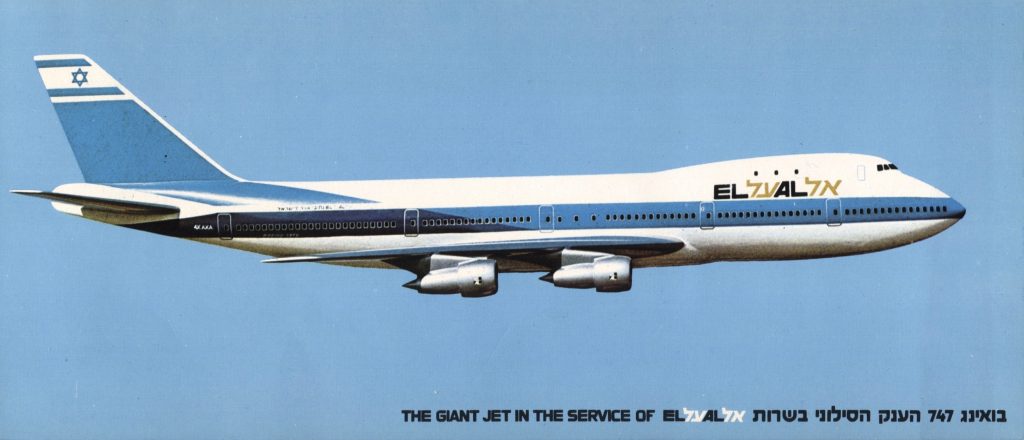
EL AL Boeing 747-200B, 4X-AXA, its first 747. Airline issue, 3.8 x 9.2 in. (9.6 x 23.3 cm). 4X-AXA was delivered with three upper deck windows (usually associated with the original -100 series); however it was indeed a -200B series, and additional upper deck windows were added soon after delivery. This postcard also exists in standard size in English and French text versions, and a variation exists with the aircraft pointing upwards. With the 747-200, EL AL introduced a new classic livery for its fleet, designed by noted Israeli artist Dan Reisinger, which remained as EL AL’s standard livery for 28 years – until 1999.
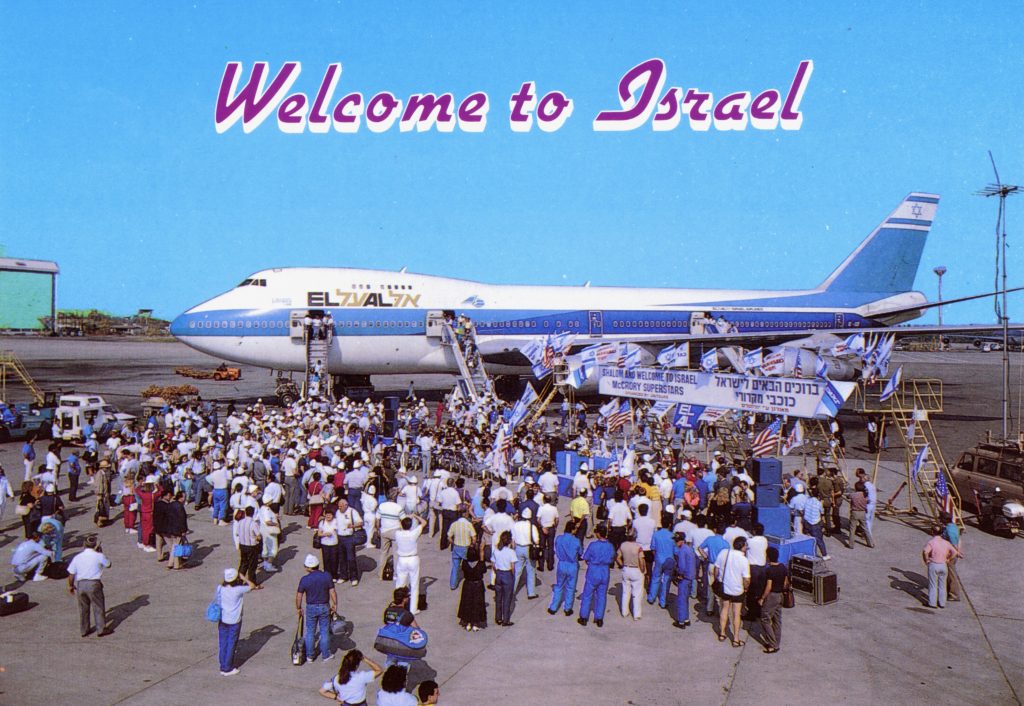
EL AL Boeing 747-200B, 4X-AXB, at Tel Aviv – Ben-Gurion Airport. ‘Welcome to Israel’ card with McCrory group. Pub’r Palphot 25312SC, 1988. The aircraft bears EL AL’s 40th anniversary logo to the right of its titles.
During 1980-89 EL AL operated four different 737-200s on short-haul routes.
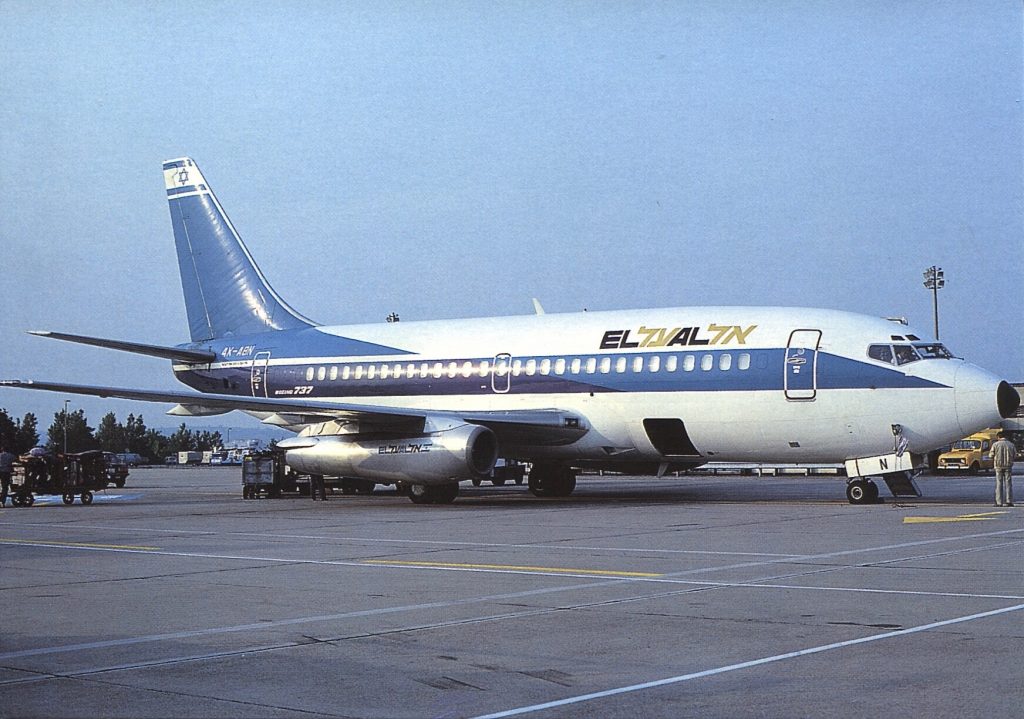
EL AL Boeing 737-200, 4X-ABN, June 1984. Pub’r Blue Air no. BA 04. A Czech airline enthusiast published many airline postcards under the name ‘Blue Air’, featuring EL AL aircraft. EL AL itself issued only one 737-200 postcard, showing a side aerial view.
In 1983 and 1987 respectively, EL AL introduced Boeing 767s and 757s to its fleet, featuring more modern cockpits and improved fuel efficiency. EL AL operated six 767-200s at varying times between 1983 and 2013; ten 757-200s between 1987 and 2013, and seven 767-300ERs between 2004 and March 2019.
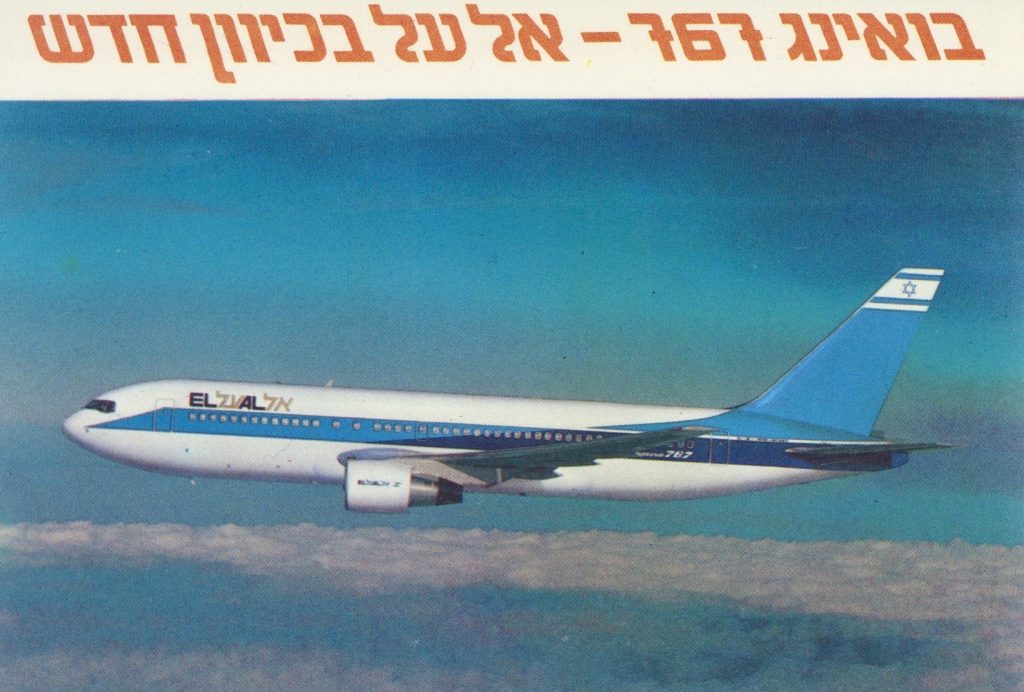
EL AL Boeing 767-200ER, 4X-EAA. Airline Issue, about 1983. The Hebrew writing on top says: ‘Boeing 767 – EL AL in a New Direction’.
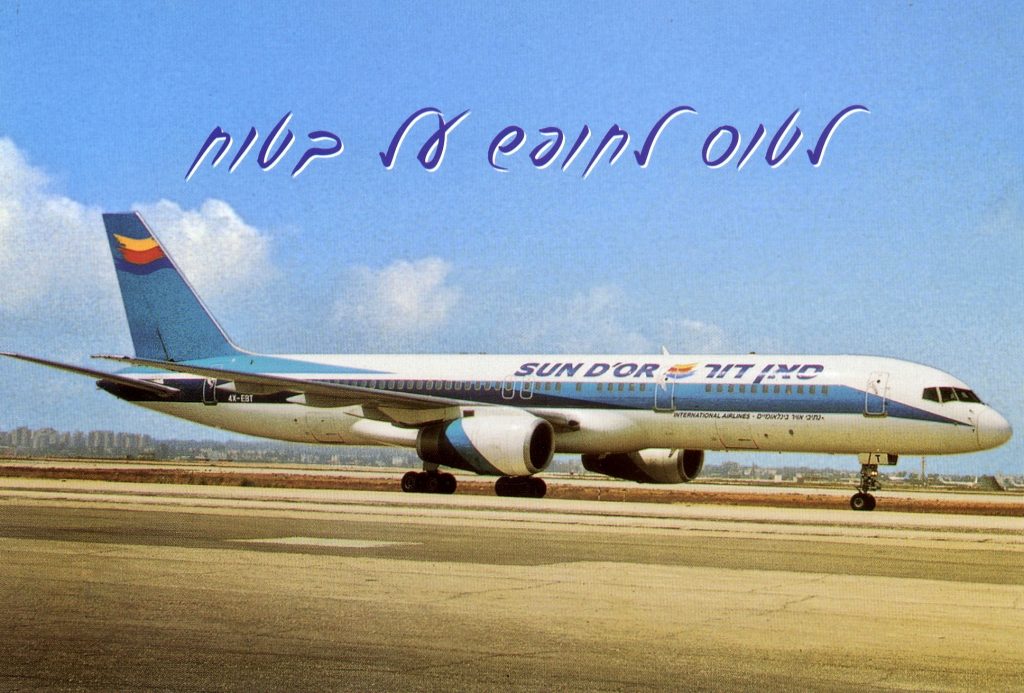
EL AL 757-200, 4X-EBT, in livery of its affiliate Sun d’Or. Airline Issue, about 2005. The Hebrew text says ‘To fly on vacation super-assured’.
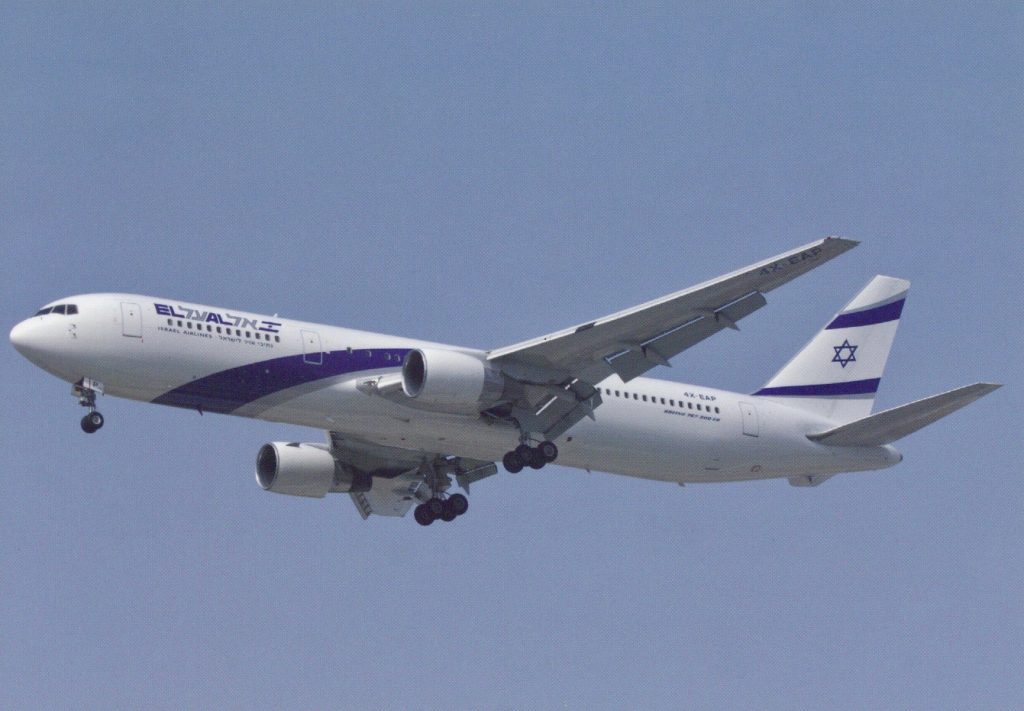
EL AL 767-300ER, 4X-EAP, landing at Tel Aviv – Ben-Gurion Airport, 1 June 2006. Pub’r Blue Air BA-42. EL AL did not issue any postcard showing a 767-300. Its New York Office issued a postcard in 2015 promoting Boston-Tel Aviv nonstop service with 767-300ERs; however, that postcard showed a 767-200ER.
In 1994 EL AL acquired the first of eight Boeing 747-400s for its fleet. With this aircraft type, EL AL changed the colors of its livery ‘EL AL’ titles from black and gold to light blue and dark blue.
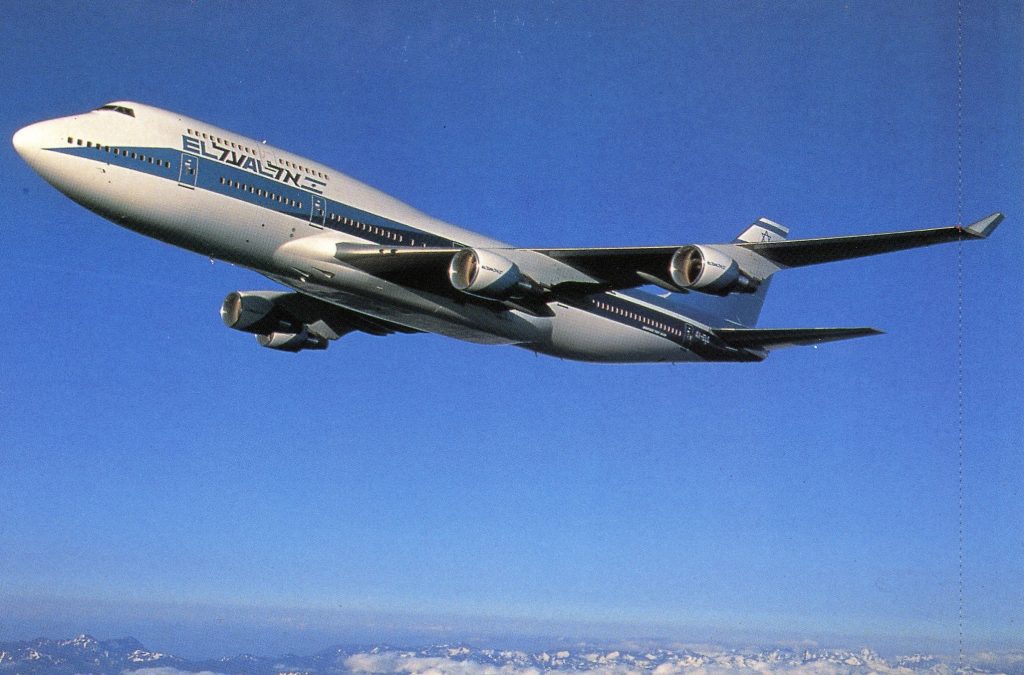
El Al Boeing 747-400, 4X-ELA, in the type’s original livery. Available only as the last postcard in EL AL-issued ‘Israel’ and ‘Holy Land’ postcard booklets (the other cards in the booklets show Israeli scenes).
In 1999, on EL AL’s 50th anniversary and the acquisition of its fourth 747-400 (4X-ELD), EL AL introduced an all-new livery with dark blue and silver ‘ribbons’ and lettering on a white base.
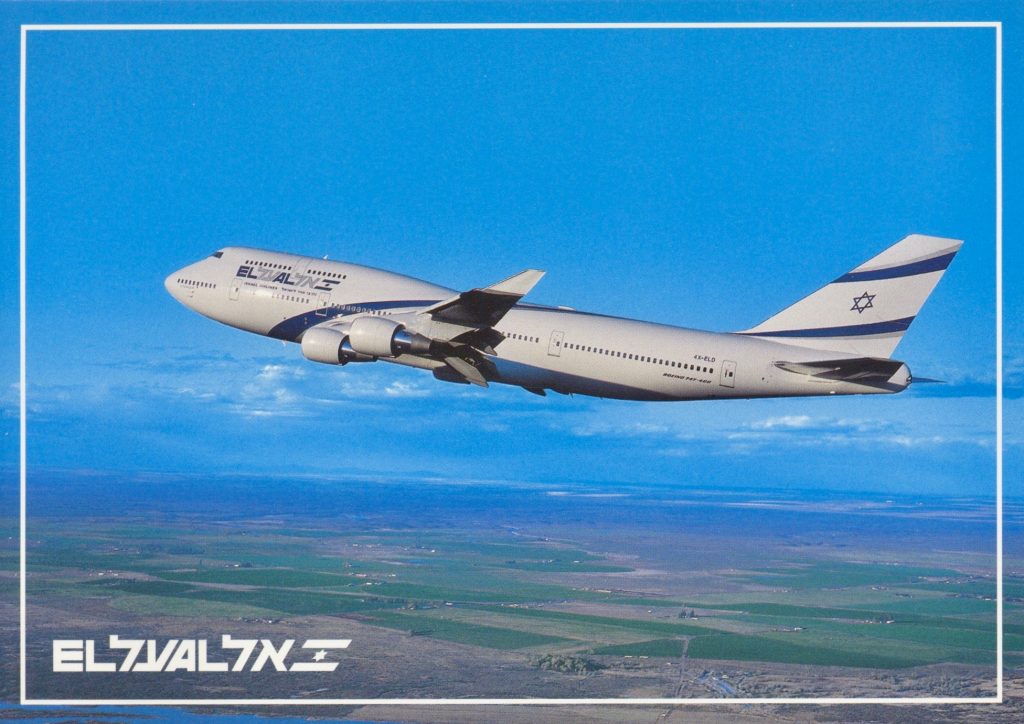
EL AL 747-400, 4X-ELD, featuring the airline’s new dark blue and silver ribbons livery. Airline Issue no. 60-301420/99, 1999. A similar card, showing the aircraft over clouds, was issued in 2005 (no. 60-301420/05. EL AL’s New York Office issued another variation showing modified ‘EL AL’ titles introduced on its aircraft in 2006.
In early 2001, to modernize its long-haul route aircraft, EL AL started to acquire Boeing 777-200ERs, with the number rising to six.
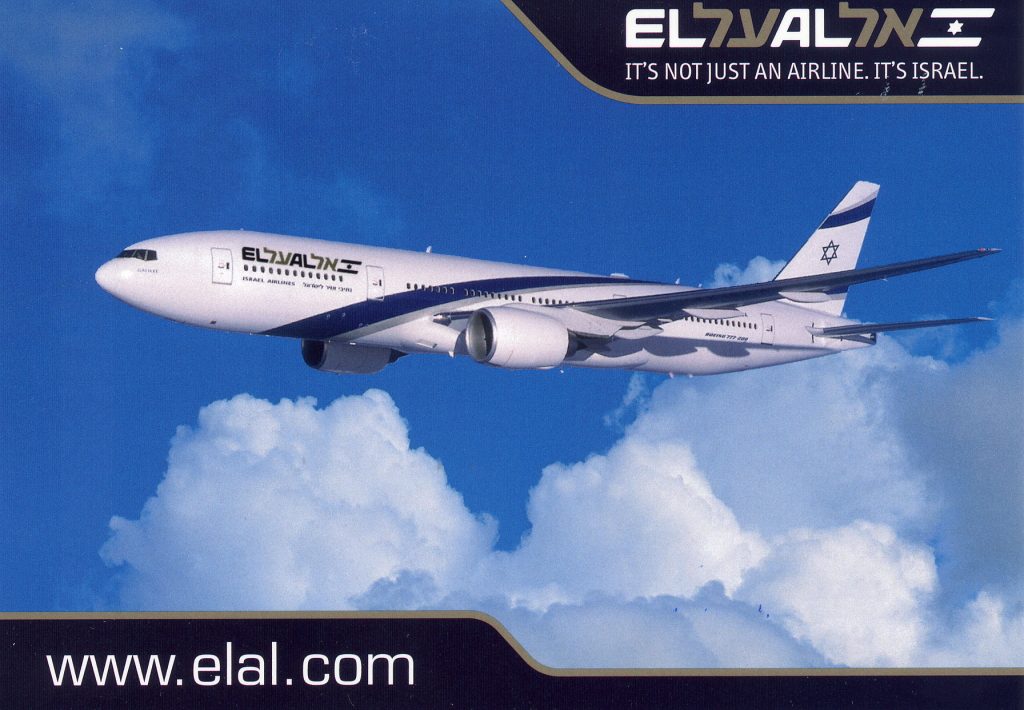
EL AL 777-200ER, 4X-ECA. Airline Issue by New York Office, about 2010.
For short-haul routes, EL AL turned to Boeing 737 New Generation aircraft, starting in 1999. These included two 737-700 (in fleet 1999 – 2016), fifteen 737-800 (acquired between 1999 and 2018 and still current), and eight 737-900ER (acquired between 2013 and 2016 and still current). I am not aware of any 737 New Generation postcards issued by EL AL. Here are two publisher-issued cards.
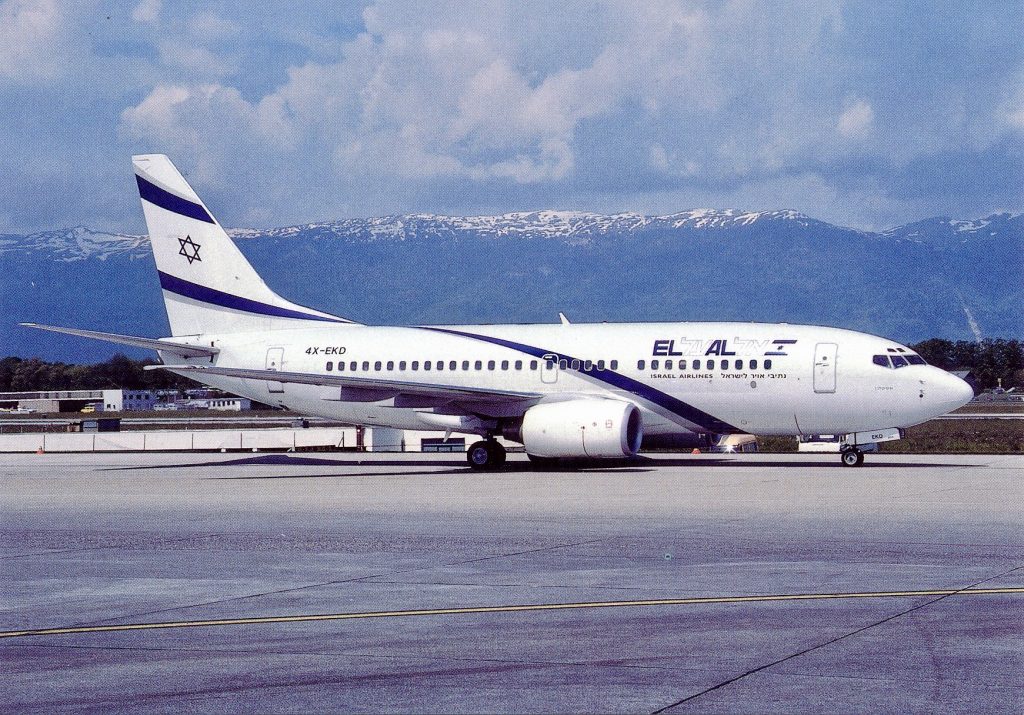
EL AL Boeing 737-700, 4X-EKD, at Geneva, 2000. Pub’r Air Hobby #375.
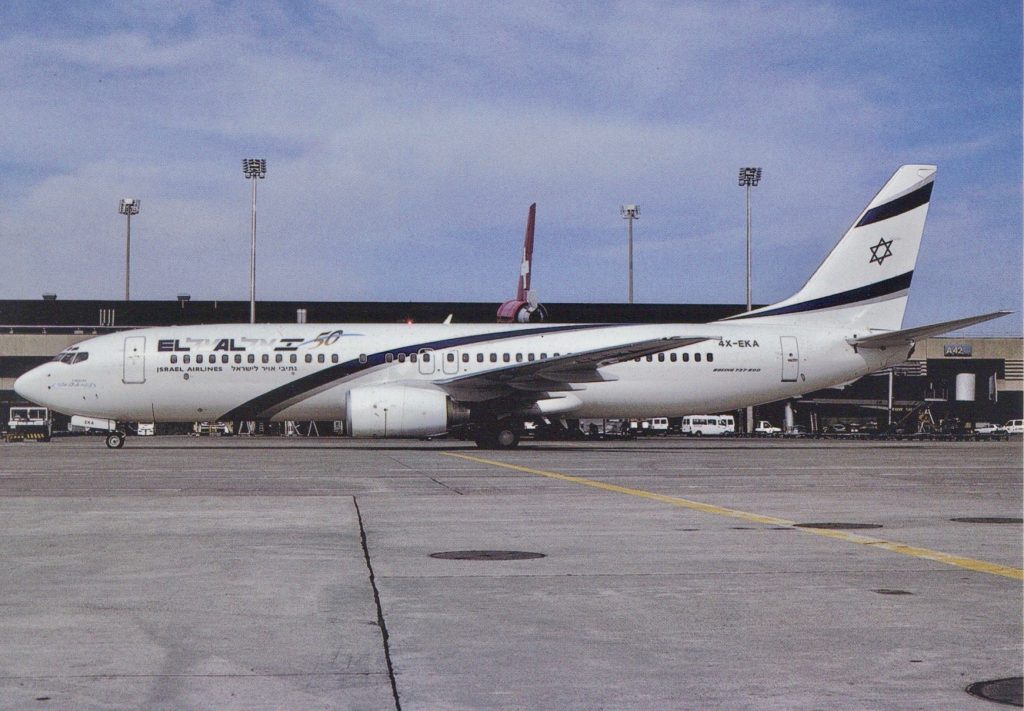
EL AL 737-800, 4X-EKA, at Zurich, March 1999. Photo by Aviatrade, Pub’r Blue Air BA-11.
EL AL’s long-haul fleet renewal started in 2017 with the arrival of the first of 16 Boeing 787 ‘Dreamliners’ ordered. By the end of 2019, 13 Boeing 787-9s and one 787-8 had joined its fleet. Three more 787-8s are on order and expected to be received by March 2020.
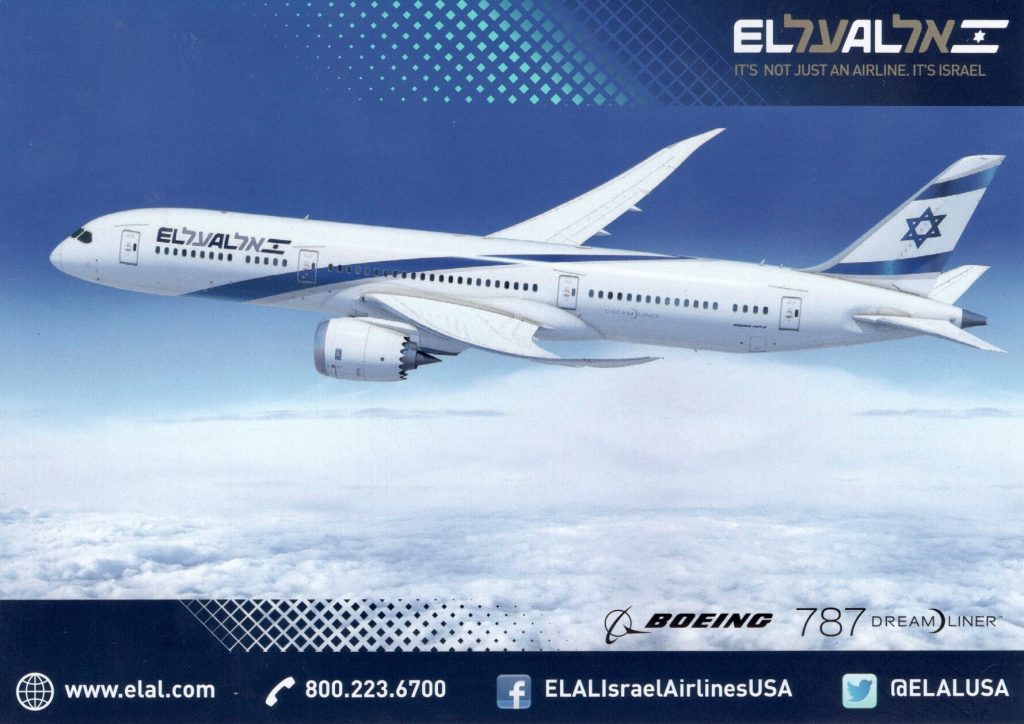
EL AL Boeing 787-9 ‘Dreamliner’. Computer art postcard. Issued 2018 by EL AL’s New York Office.
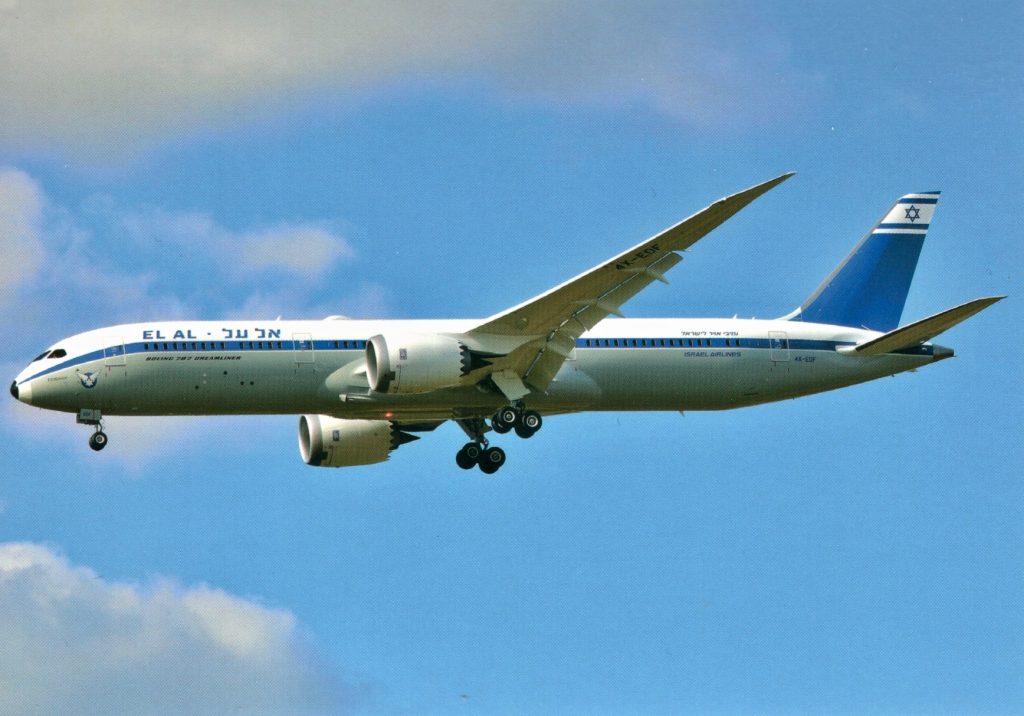
EL AL 787-9, 4X-EDF, landing at Paris-CDG, 2018. Photo by Daniel Dane. Pub’r World Collector’s Cards #WCC-1154. This is the first aircraft to be painted in an EL AL ‘retro’ livery; it is similar to the original 1961 livery of EL AL’s first three 707s.
On 3 November 2019 EL AL operated its last 747-400 flight — Rome to Tel Aviv with 4X-ELC. EL AL marked the occasion with many souvenirs, including a five-card ‘747 Farewell’ postcard set. Only 500 sets were printed, and all were distributed to the passengers who filled the aircraft and others close to the airline. Here is one of the postcards from the set.
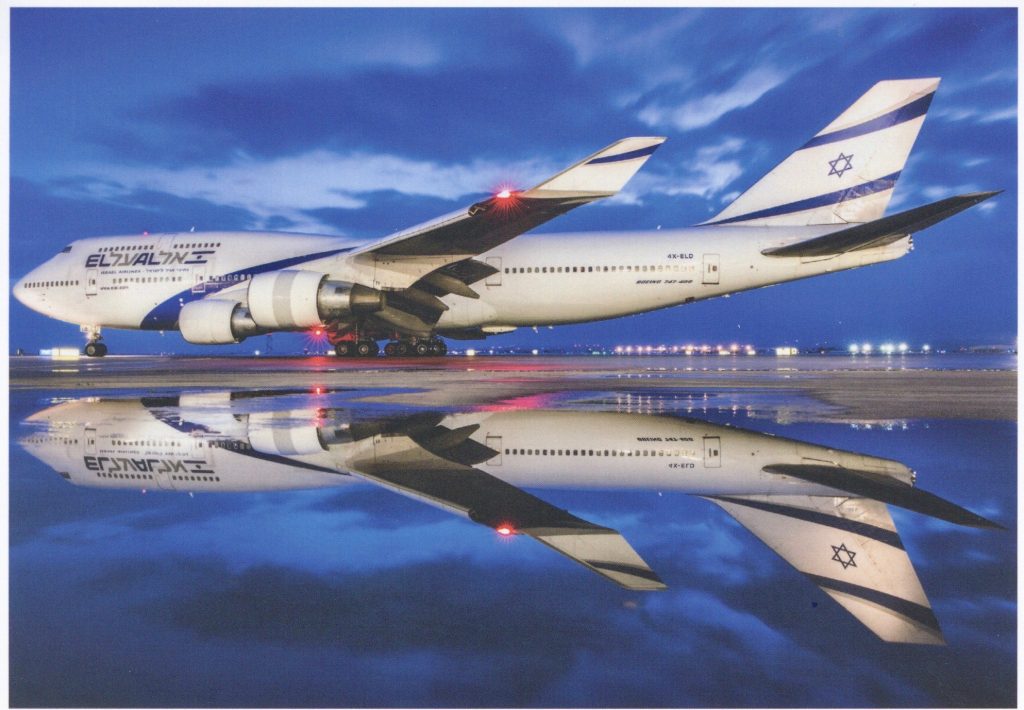
EL AL Boeing 747-400, 4X-ELD, heading for takeoff runway at Tel Aviv – Ben-Gurion Airport. Photo by Yochai Mossi. Part of a five-card ‘747 Farewell’ postcard set issued by EL AL on 2 November 2019.
I hope you enjoyed this article on the postcards of EL AL aircraft, and until next time, Happy Collecting!
Marvin G. Goldman
Notes: Originals of all the postcards illustrated are in the author’s collection except for the fourth card shown (an EL AL Constellation on a test flight in Southern California) which is in the collection of Greg Smith. My estimate of their availability: Rare postcards–the DC-4 crew, Constellation on test flight, Constellation at Zurich, and Britannia six-card composite; Uncommon–DC-4 at London, Constellation on map, Britannia and globe, 747-200 ‘Welcome to Israel’, Sun d’Or 757, 747-400 original livery in booklet, and 747-400 ‘Farewell’ card; the rest are fairly common.
References:
- EL AL’s website, elal.com, and Facebook page ELALIsraelAirlinesUSA.
- Website israelairlinemuseum.org.
